How the writers’ strike is already starting to bite

WBD’s Content Budapest keynote Cooke
Will B Corp hold TV to a higher standard?


PLUS: Content Trends Report on FAST & AI | Animated docs Viasat World | Connie Fisher | Media Res | Views & more
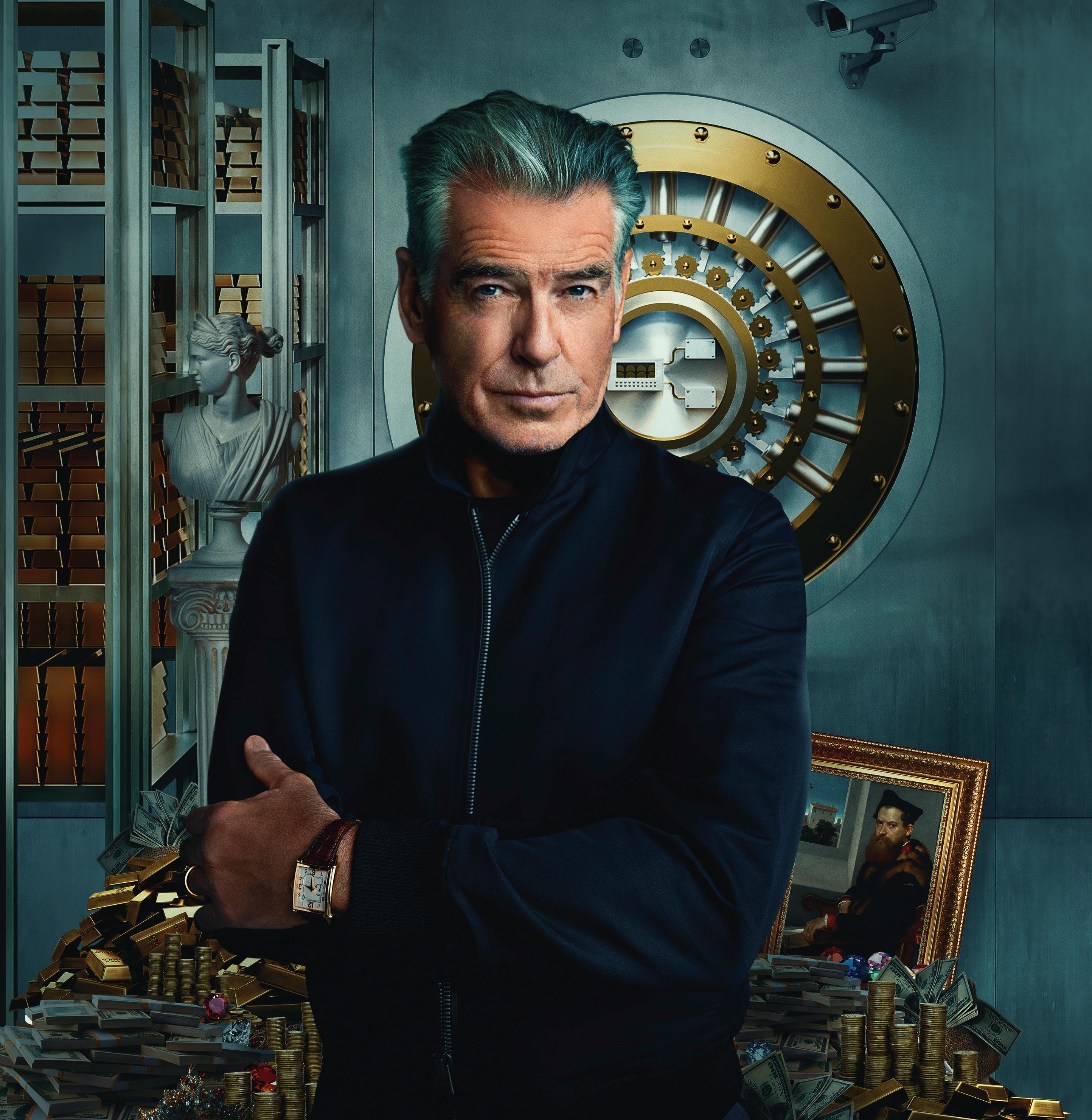
international
Everything about content Summer 2023
Some crimes can never be buried


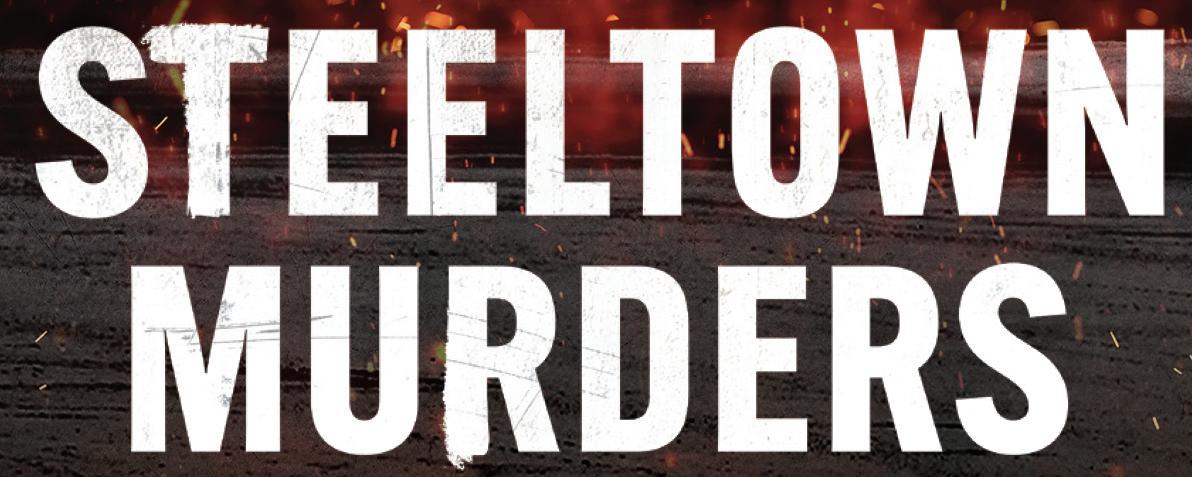

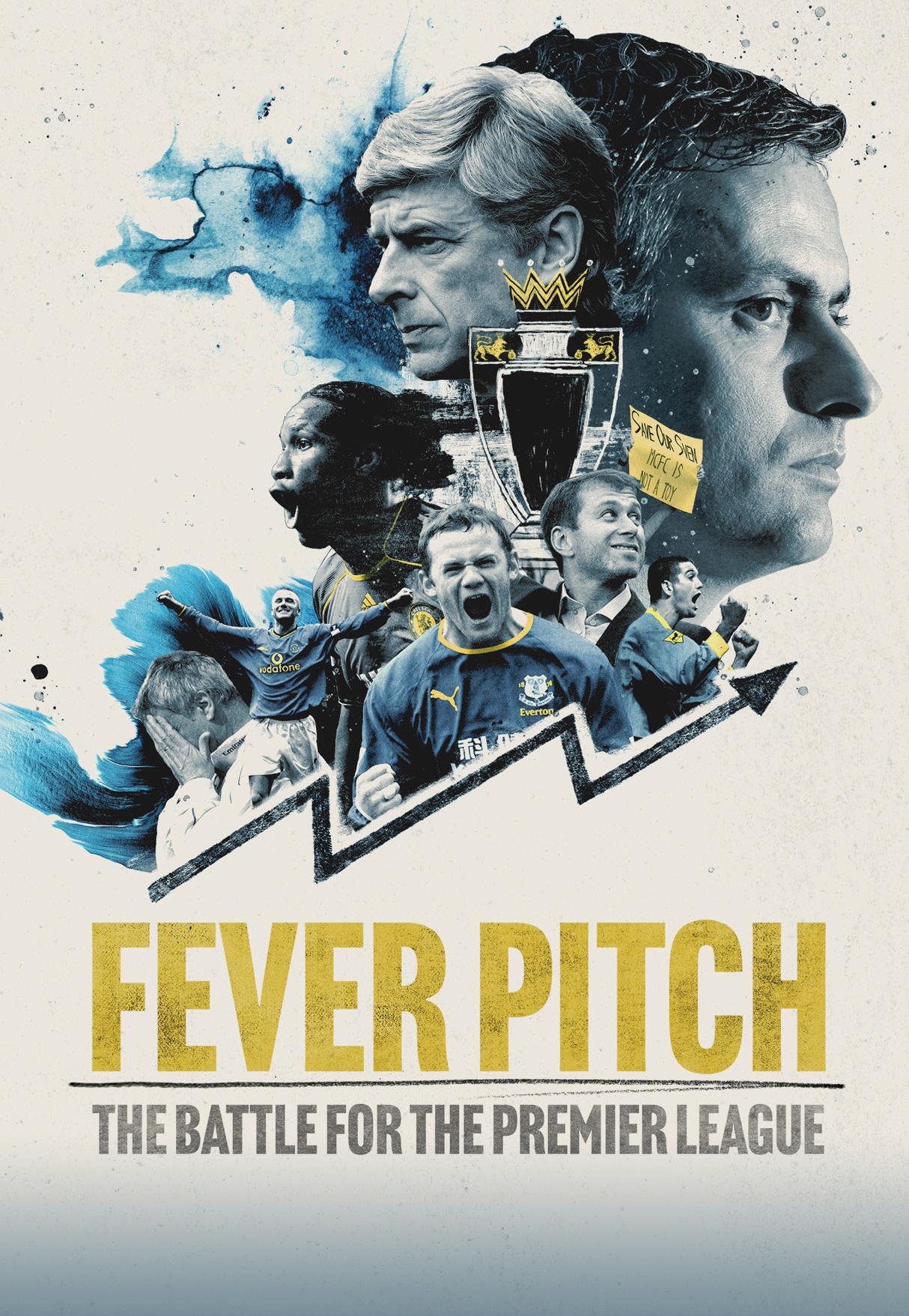



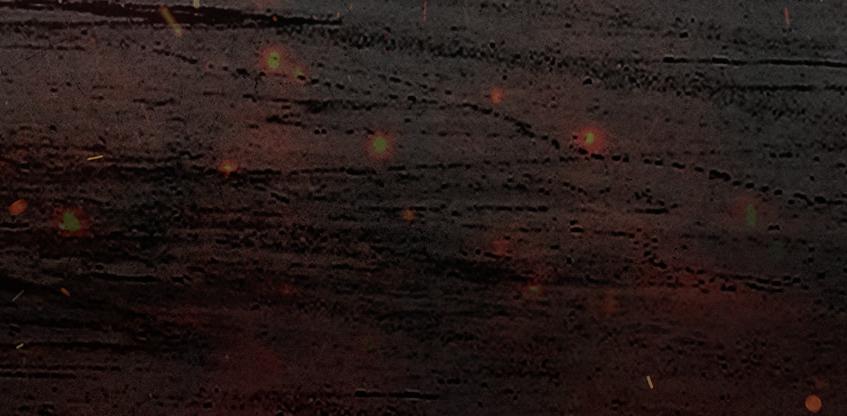


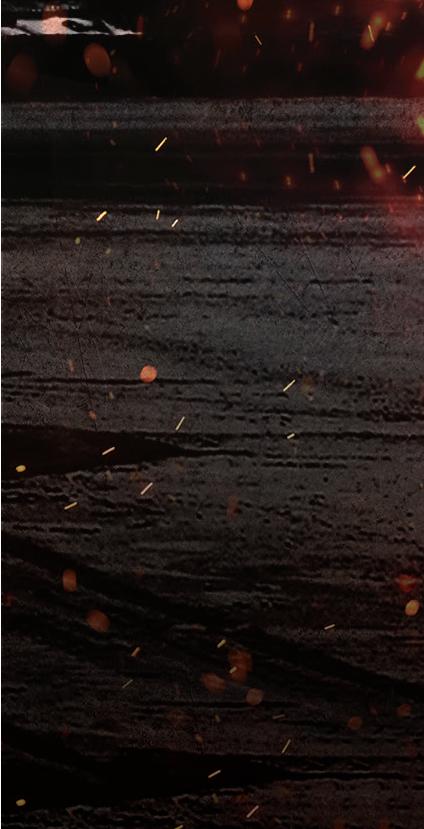



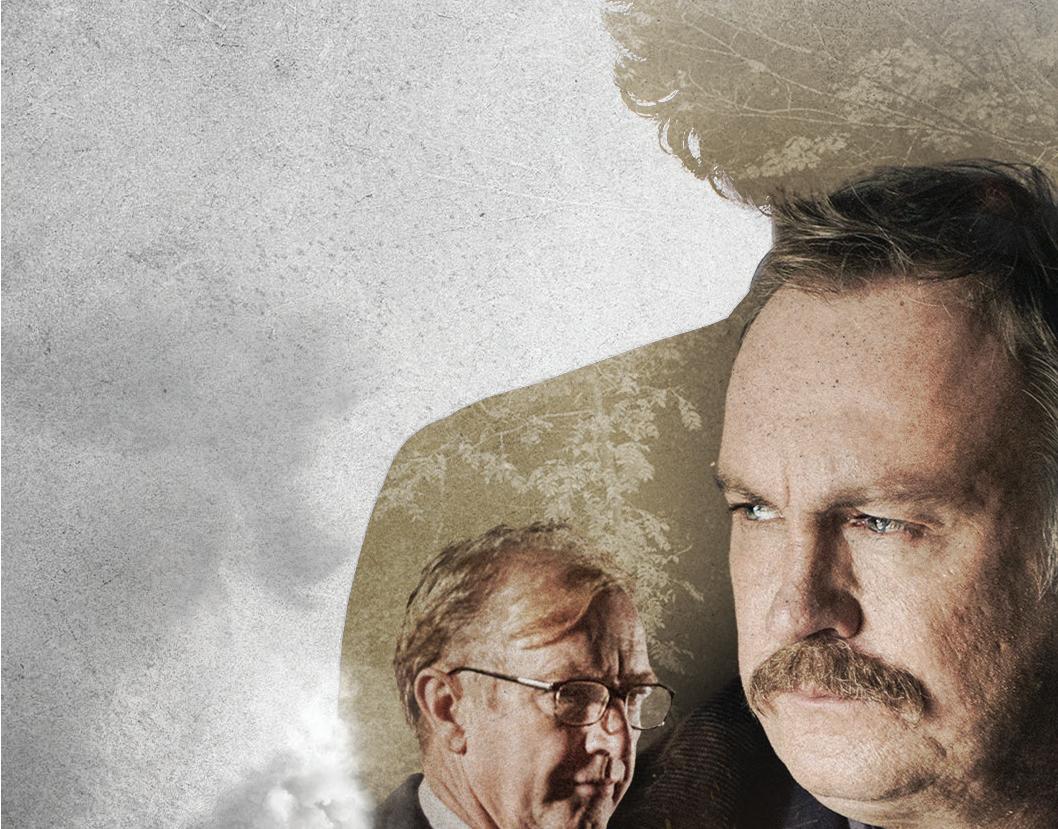
@all3media_int all3mediainternational.com


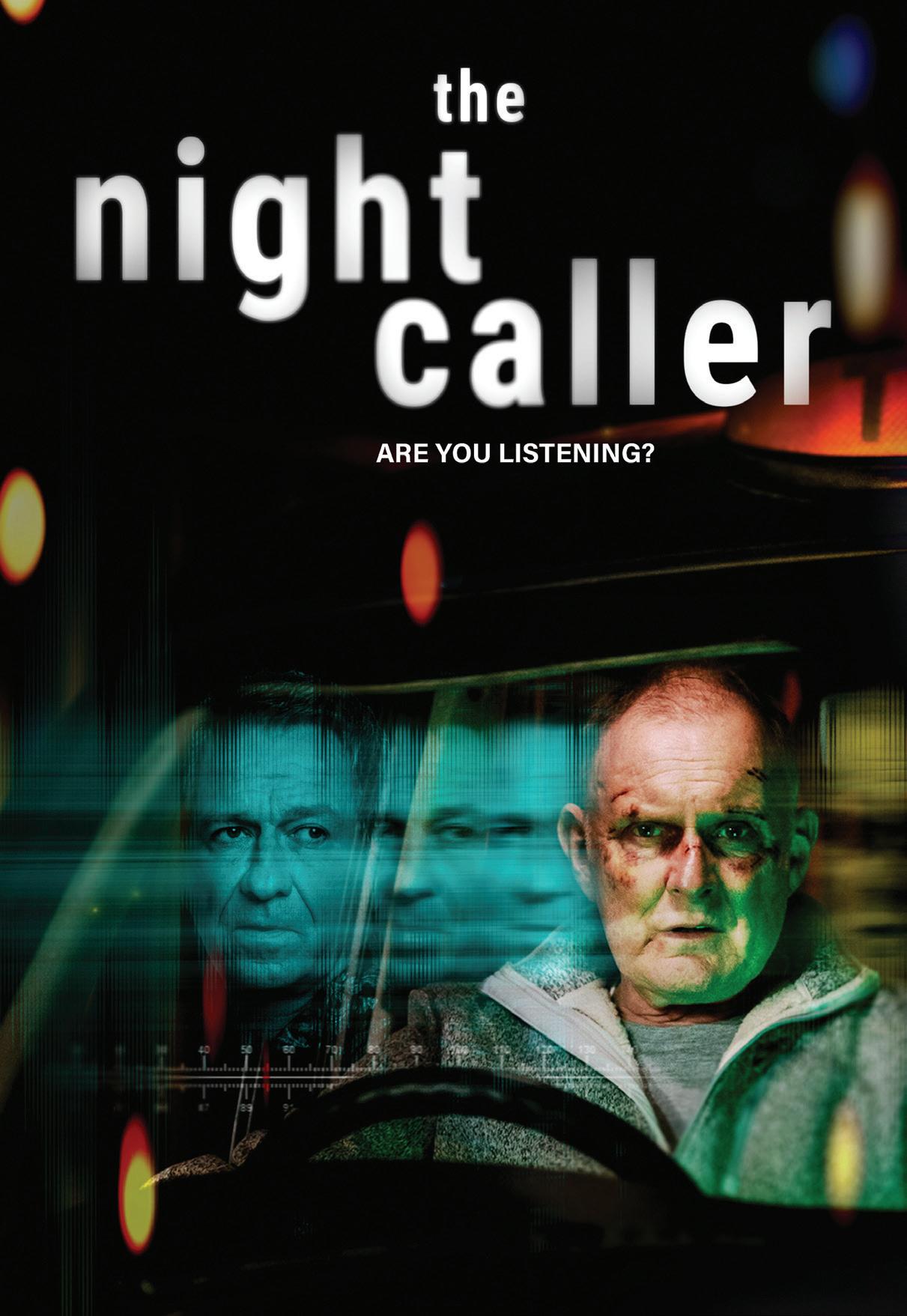





@all3media_int all3mediainternational.com Bringing you compelling dramas, premium documentaries and stand-out formats BASED ON MARKUS ZUSAK’S BESTSELLING NOVEL











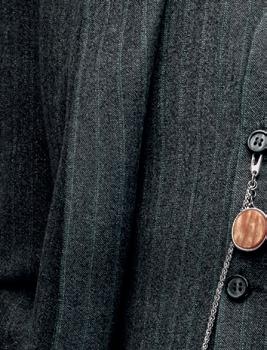

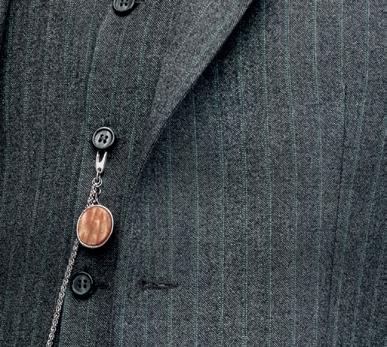






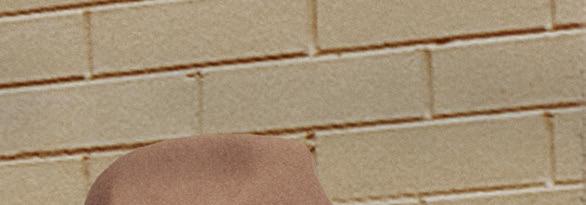

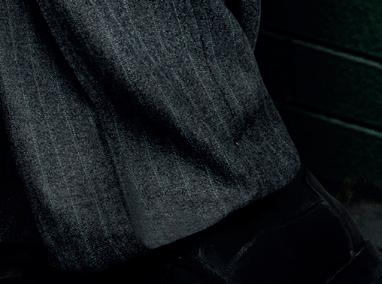

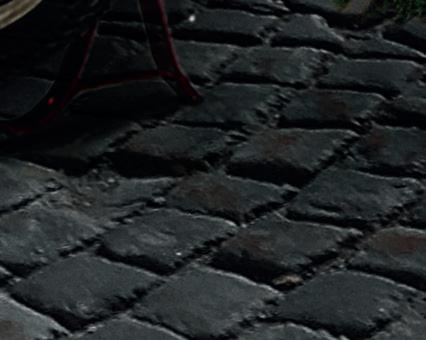
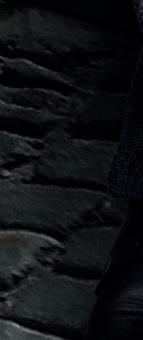





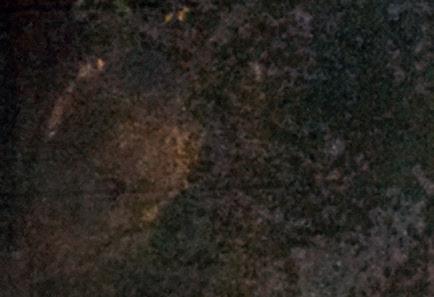


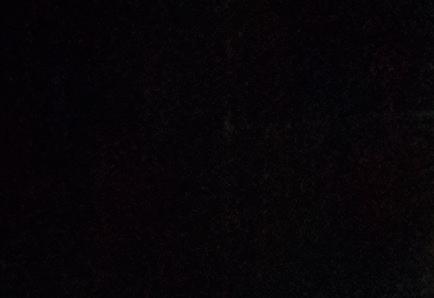
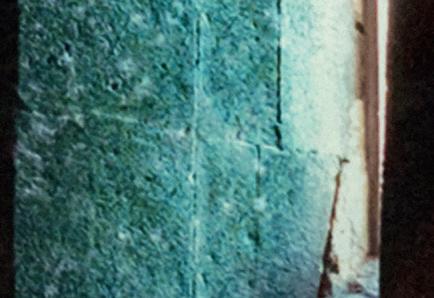
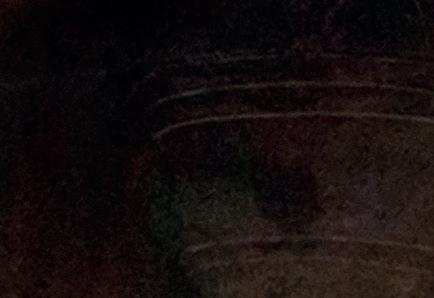


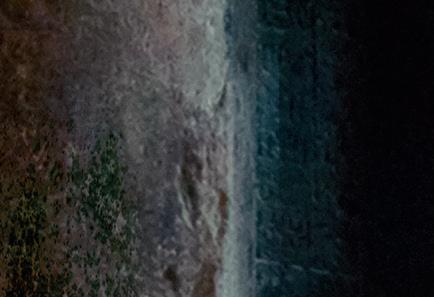

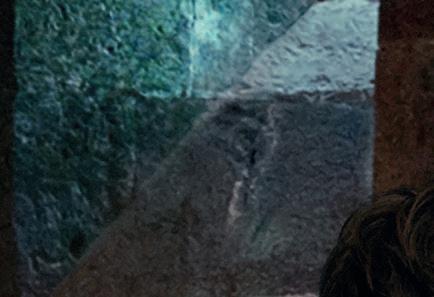



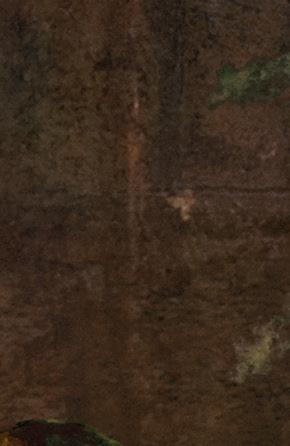

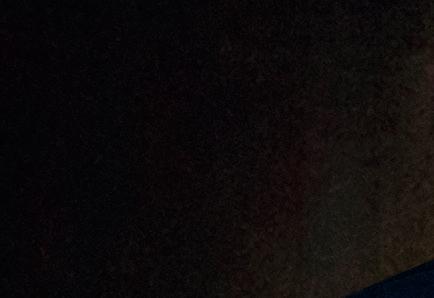

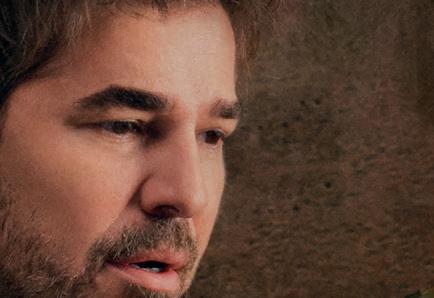






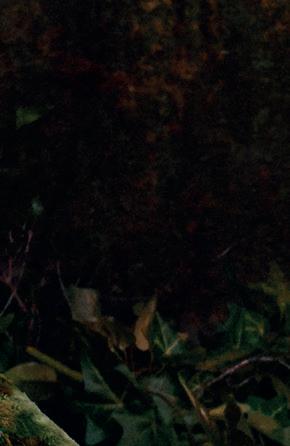
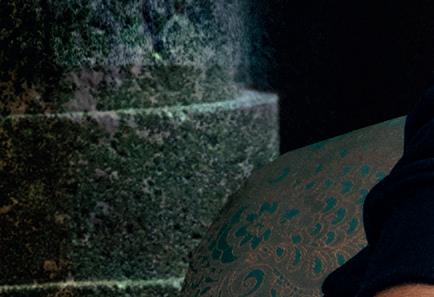


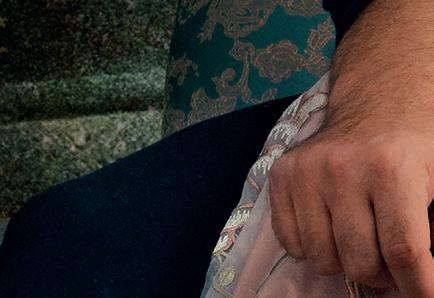
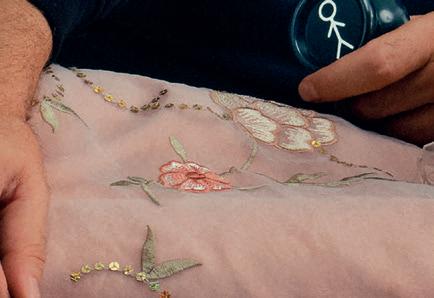








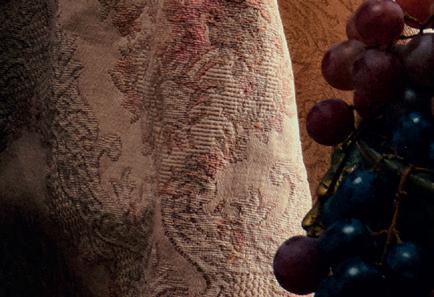




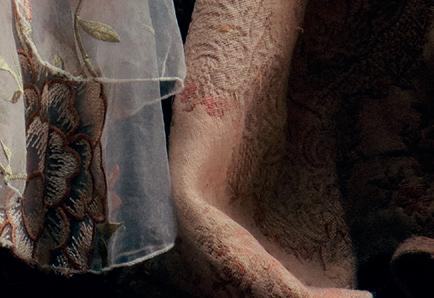

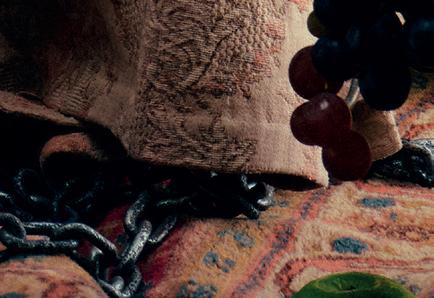



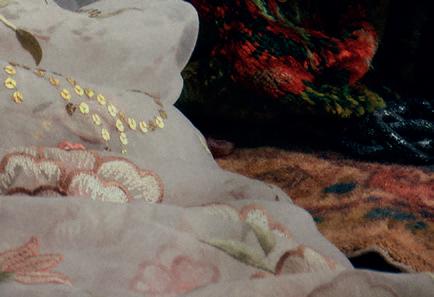
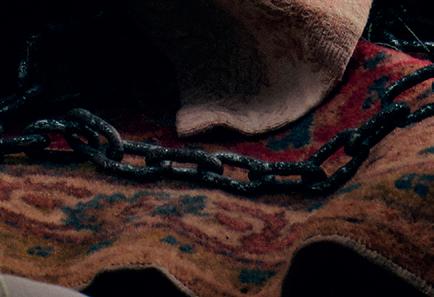




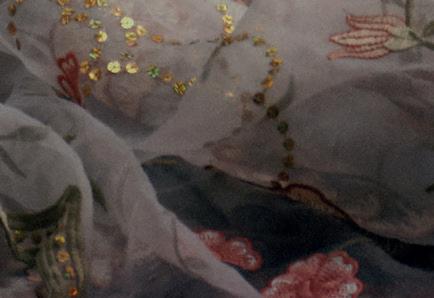
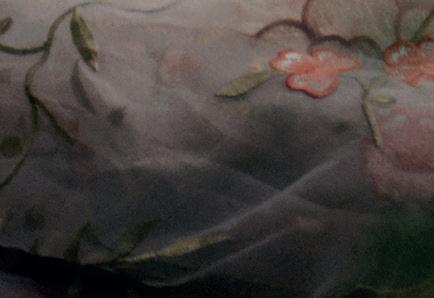



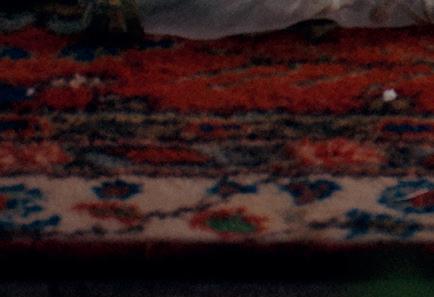


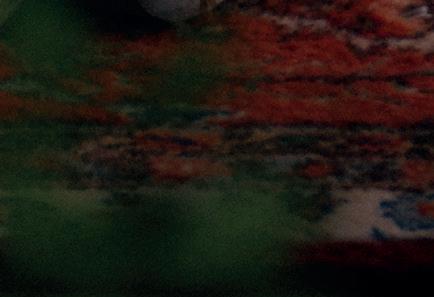
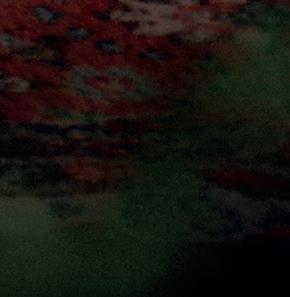









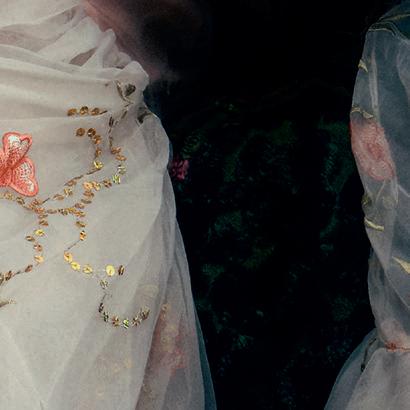


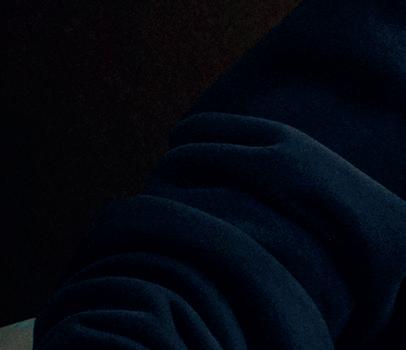














Enjoy The Drama


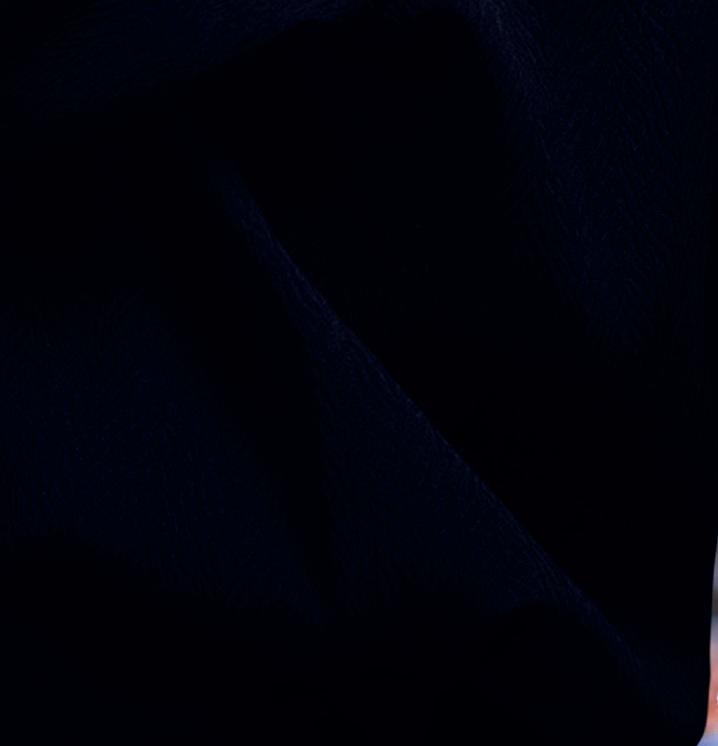
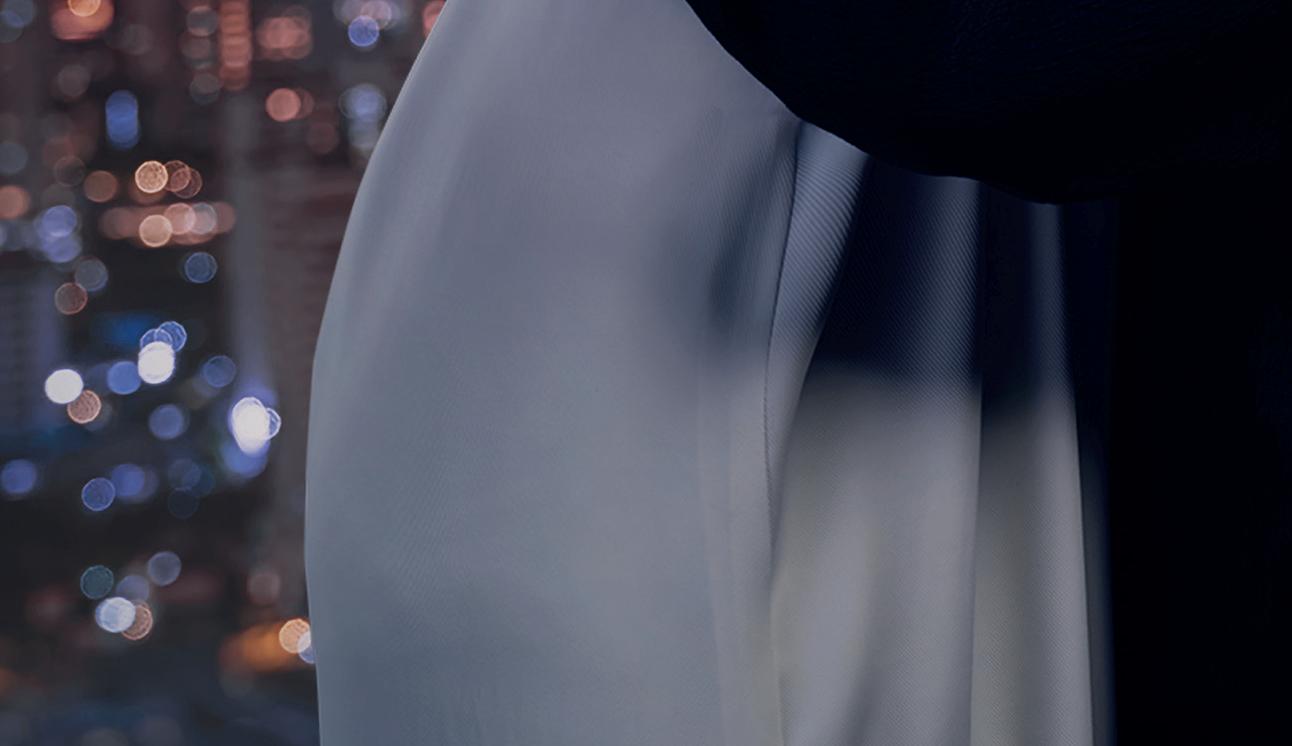




@Suite #223




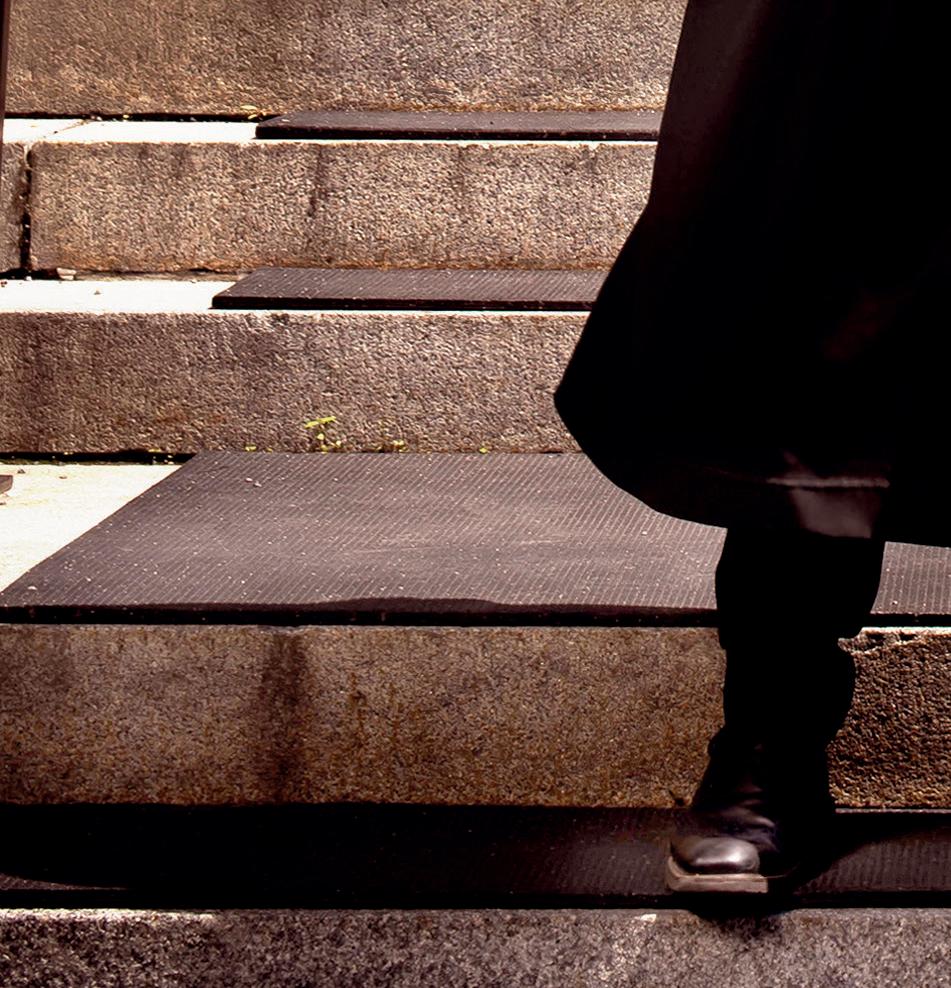

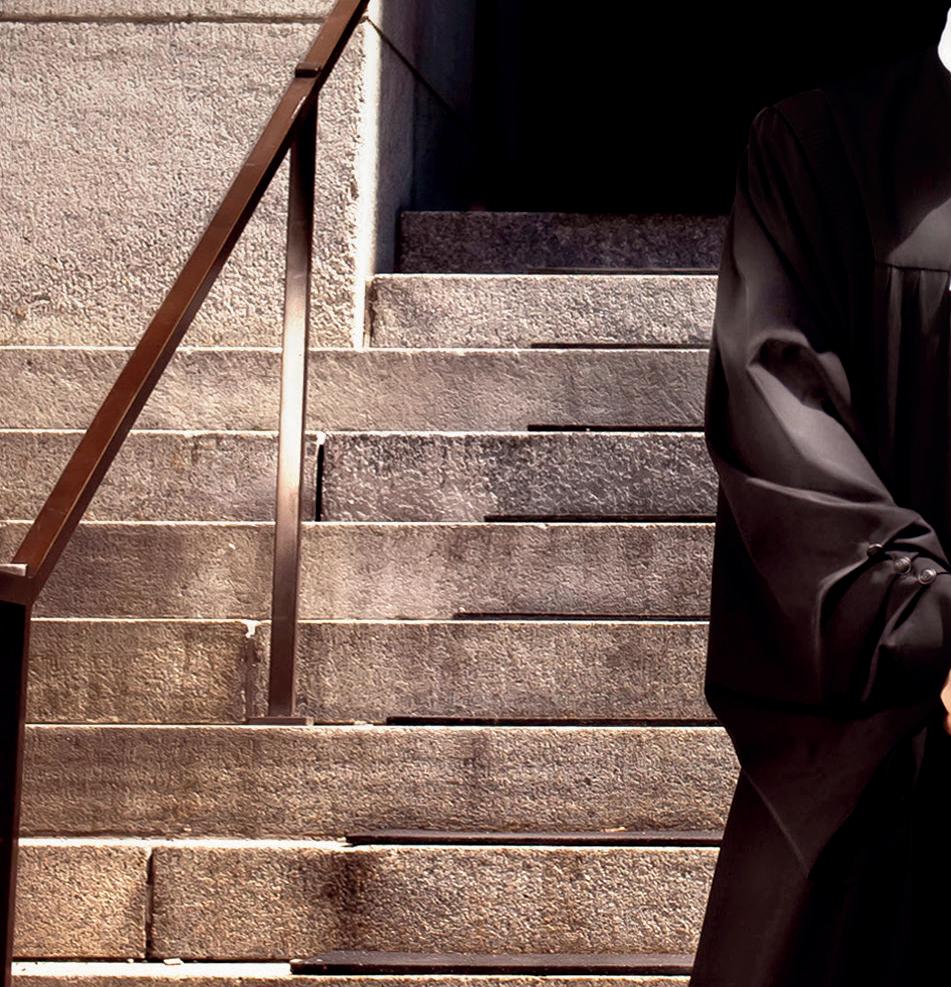

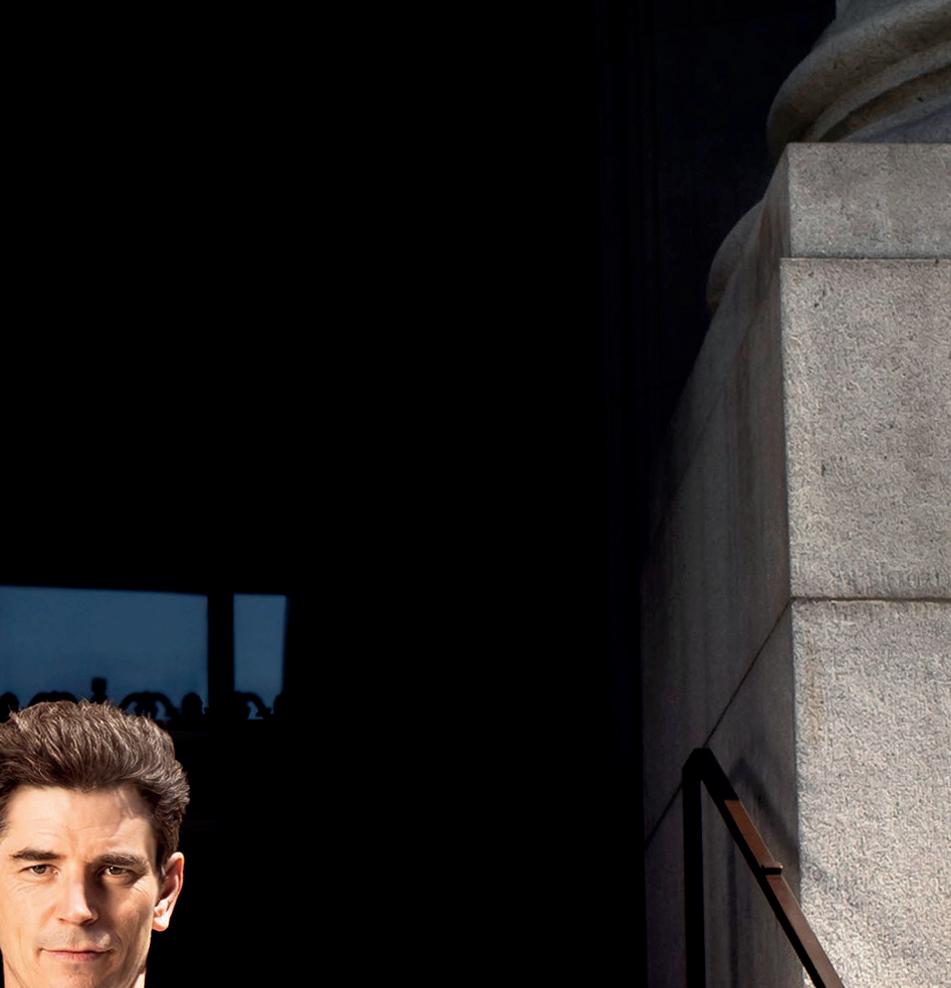
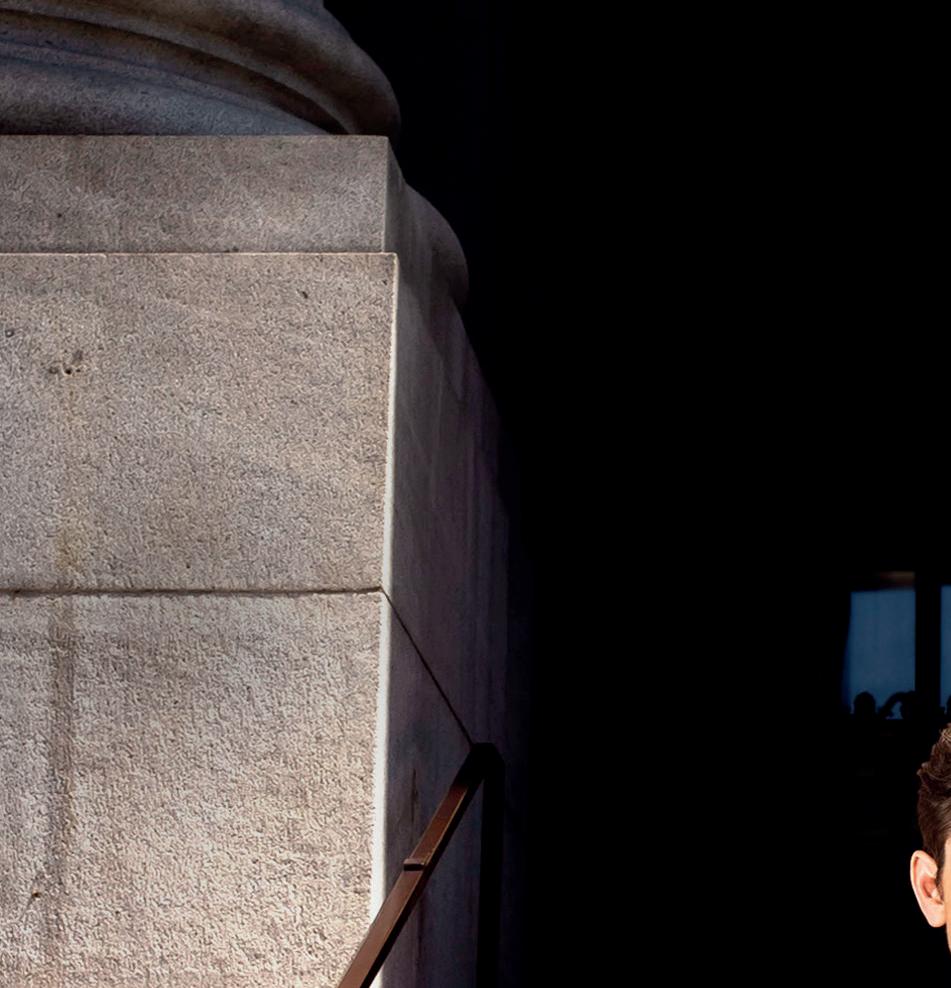

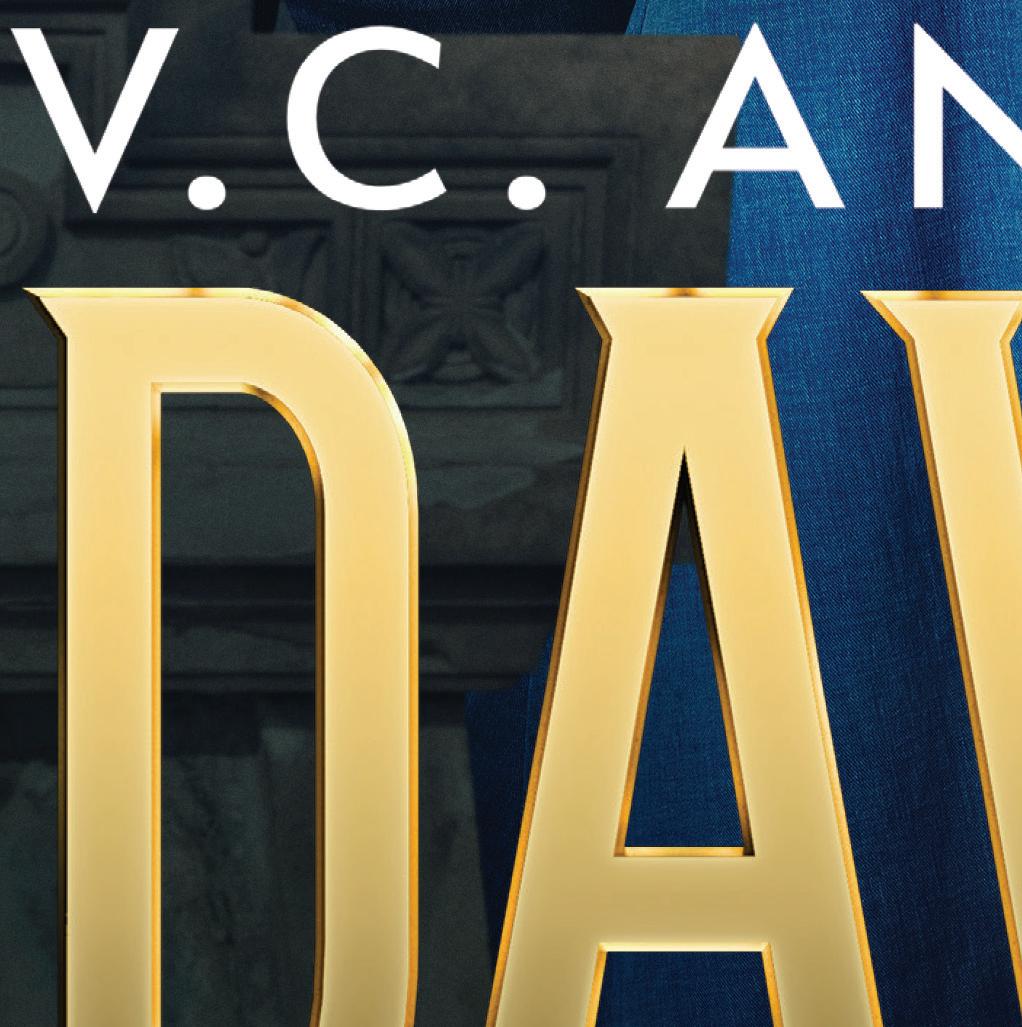


CONTENTS UPFRONT
Has SVoD hit the bu ers?

How much would you expect to make as the star, co-writer and coproducer of a film that rose to become the number one movie on Netflix? I bet it wasn’t just US$17,000.
But that’s how much comedian and actor Eric André claims he made from Bad Trip, his hidden-camera prank comedy released globally on Netflix in March 2021. Granted, the film suffered colossal bad luck, having initially been primed for cinemas 12 months earlier before having its release postponed indefinitely due to Covid-19.
Still, you’d think having a hit movie on a global streamer would do a bit more for your bank balance than working just over minimum wage for a year.
“I made zero dollars. The movie took sevenand-a-half years to make and I probably netted 17,000 bucks,” André told The Howard Stern Show recently.
It’s an extreme example of how the economics of the subscription streaming model don’t always add up. Hence the disputes at the centre of the ongoing US writers’ strike (page 8) and the course correction at global media giants, where the reliability of the advertising-funded model and third-party licensing are acting as a balm to the volatility of SVoD.

Luckily for André, he still has The Eric Andre Show on US cablenet Adult Swim and the recently launched The Prank Panel on ABC to pay the bills.
It may have its detractors, but traditional linear TV is back in fashion with talent frustrated with a streaming model that so often sees their projects flash before the eyes of viewers before disappearing deep within a carousel.
The tide has been turning against SVoD ever since Netflix announced its first subscriber losses for a decade in July last year. In the US, the upstart alternative, in the form of free adsupported streaming TV (FAST), is building up a head of steam – although as our report on page 12 highlights, it will remain a thin slice of the overall media pie in the years to come.
Moreover, in markets such as Central and Eastern Europe, FAST remains what you do after one too many pierogis rather than a place to find freely available reruns of Baywatch, Kitchen Nightmares and other library programming distributors have dusted off for the AVoD treatment elsewhere in Europe and North America.
It feels like a long time since an exec has risen above the parapet and defended the old-school pay TV model, but Warner Bros Discovery’s Jamie Cooke does just that on page 15 ahead of his keynote at C21’s Content Budapest from June 27 to 29. As old business models come back into vogue, it’s fitting C21 is reviving the traditional boat party at the event. See you on the Danube!
 Nico Franks
Nico Franks
THE C21 CONTENT TRENDS REPORT: Summer 2023
As film sets and writers’ rooms shut down, fears grow the US writers’ strike could last longer than initially expected.
How artificial intelligence is central to the writers’ strike, the future of the TV industry – and maybe much more.
FAST remains a hot topic thanks to its rapid growth, with hundreds of channels launching. But what does its future hold?
THOUGHT LEADERSHIP: Jamie Cooke

Warner Bros Discovery is aiming to ‘pepper’ its CEE schedules with local originals, according to its general manager in the region.


AHEAD OF THE CURVE: B Corp certification & TV
Few TV companies have been certified by environmental, social and governance initiative B Corp, but could that be about to change?
NEXT BIG THINGS: Animated documentaries
How far can using animation in docs overcome a lack of archive, rights problems and di iculties in attracting a young audience?
CONTENT STRATEGIES: Viasat World
The CEE pay broadcaster reveals its content needs for branded factual channels Explore, History and Nature, plus scripted network Epic Drama.
MY BIG BREAK: Connie Fisher

The head of development at Wildflame Productions describes her journey from on-screen talent show fame to success o -camera as a creative executive.
DEVELOPMENT SLATE: Media Res
Former Banijay exec Lars Blomgren talks about his international content priorities and the challenges the US-based production studio faces.
PRESENT IMPERFECT FUTURE TENSE
Scott Kirkpatrick, executive VP of coproductions and distribution at Nicely Entertainment, explains why you should be excited about the impact of AI on TV.
Channel21 International | Summer 2023 | Issue #319 7
8 15 21 24 27 30 31 32 27 31
The first American writers’ strike in 15 years is creating chaos in the US market and only promises to get worse as scribes and studios wait for each other to blink.

The Writers Guild of America (WGA) has officially been on strike since May 2 after failing to reach a new deal with the Alliance of Motion Picture and Television Producers (AMPTP), which represents the major US studios in labour negotiations.
As talks collapsed just ahead of the May 1 deadline, the WGA claimed the “studios’ responses have been wholly insufficient given the existential crisis writers are facing,” while the AMPTP said that it had presented a “comprehensive package proposal” including “generous increases in compensation for writers as well as improvements in streaming residuals.”

According to the WGA, its own proposal would cost the industry an additional US$429m annually, with US$343m coming from the eight largest studios: Disney, Netflix, Warner Bros Discovery, Paramount Global, NBCUniversal, Amazon, Sony and Apple.
While many had predicted writers would down tools in what has repeatedly been billed as a ‘generational strike’ over pay, streamingera residuals, the size of writers’ rooms and artificial intelligence, there is a growing sense that it could last three months or potentially significantly more, such is the gap between the two sides on key issues.
Many have suggested the studios secretly welcomed the strike, as it allows them to suspend or cancel costly overall deals and reduce the number of shows they are producing.

And while that may be the case, it is also creating enormous headaches for studios, with dozens of shows shutting down production either temporarily or for the duration of the strike.
Among those shutting down production until a new deal is reached is Max comedy Hacks, while others such as Netflix’s Stranger Things have postponed the start of production indefinitely until the strike ends. Other high-profile writers’ rooms closed for the length of the strike include those for Showtime’s Yellowjackets and HBO’s Game of Thrones spin-off A Knight of the Seven Kingdoms: The Hedge Knight
Understandably, tensions are high
In it for the long haul?
The C21 Content Trends Report, a quarterly outline of the biggest trends in the business, continues with the latest on the US writers’ strike, as film sets and writers’ rooms close while fears grow the stoppage could last longer than initially expected. By Jordan Pinto

as the writers and studios attempt to navigate the early stages of the strike. For WGA writers, a strike means they cannot pitch new shows or promote their in-development work at industry events or panels. The first industry event impacted by the strike was SeriesFest in Denver in early May, with several showrunners and studio execs pulling out of scheduled appearances. It continued later in the month with the Upfronts, C21’s Content LA and the Cannes Film Festival and the disruption will no doubt continue for the duration of the strike.
Given the strike is still in its infancy, the studios are, for the most part, taking a wait-and-see approach. The AMPTP has been conspicuously quiet
throughout, save for a couple of brief statements. However, the organisation might be wise to maintain a low profile given it is also negotiating with the Directors Guild of America (DGA) and preparing to begin talks on June 7 with actors’ union SAG-AFTRA. Both those deals expire on June 30.
Despite the fact a long, drawn-out strike looks likely, the studios are currently assessing the playing field before plotting their next moves, says Wattpad Webtoon Studios head of global entertainment David Madden, who has previously held top posts at Berlanti Productions, AMC Networks and at Fox on both the studio and network side.
“Right now, the strike is still too raw in people’s brains. Most buyers are
still in a ‘work out what we’re going to do next’ phase,” he says. “If this is a long strike, buyers will be more and more anxious to find material that they can acquire and work on. But I don’t think we’re there yet, and people are not quite in the headspace.”
Studio chiefs including Netflix coCEO Ted Sarandos and Paramount Global CEO Bob Bakish have insisted they have plenty of finished content to sustain themselves through a protracted strike.
In May, Bakish claimed Paramount Global has “a lot of content in the can” and highlighted the company’s international production capabilities.

“Obviously we’ve been planning for this. We do have many levers to pull, and that will allow us to manage

8 THE C21 CONTENT TRENDS REPORT: Summer 2023 Channel21 International | Summer 2023
Max’s Hacks (inset) and Showtime’s Yellowjackets are among the shows disrupted by the strike
David Madden, head of global entertainment, Wattpad Webtoon Studios
Right now, the strike is still too raw in people’s brains. Most buyers are still in a ‘work out what we’re going to do next’ phase. If this is a long strike, buyers will be more and more anxious to find material that they can acquire and work on. But I don’t think we’re there yet, and people are not quite in the headspace.
Bob Bakish, CEO, Paramount Global Obviously we’ve been planning for this. We do have many levers to pull and that will allow us to manage through the strike, even

through the strike, even if it’s for an extended duration,” he said. “With the exception of things like late-night, consumers really won’t notice anything for a while.”

In terms of the cost of the strike to the studios, credit ratings agency Moody’s estimated the US studios are

if it’s for an extended duration. With the exception of things like latenight, consumers really won’t notice anything for a while.
Julie Pizzi, president, Bunim/ Murray Productions

If you go back to the last strike, there were far fewer unscripted shows in the marketplace, so it was an opportunity to lean into that. Now, there’s as much unscripted as there is scripted, so I don’t really see that the writers’ strike will create a surge of unscripted.
Mary Ann Halford, partner at consultancy firm Altman Solon

During the 2007 writers’ strike, there was a lot of ingenuity that came
likely to face annual cost increases of between US$250m and US$350m once a new deal has been signed with the WGA.
Other unions such as SAG-AFTRA and the DGA will also achieve improved deals, Moody’s estimated, meaning the US studios will pay
out of unscripted programming. Perhaps we’ll see some new things that will come out of this era, so I would expect a few surprises over the next six to eight months. Somebody is going to strike some kind of format that’s going to resonate with audiences.
Ted Sarandos,

co-CEO, Netflix

We have a large base of upcoming shows and films from around the world. We could probably serve our members better than most. We really don’t want this to happen, but we have to make plans for the worst, and so we do have a pretty robust slate of releases.
US$450m-$600m more annually once the current round of negotiations concludes. The report added that some of the increased costs are “likely to be passed on to buyers.”
One important difference between this strike and the 2007/08 stoppage is that most producers are not
expecting an uptick in unscripted content commissioning.
“If you go back to the last strike, there were far fewer unscripted shows in the marketplace, so it was an opportunity to lean into that. Now, I think there’s as much unscripted as there is scripted, so I don’t really see that the writers’ strike will create a surge of unscripted,” says Julie Pizzi, president of LA-based unscripted outfit Bunim/Murray Productions (BMP).
Pizzi adds that she has not seen anything from buyers that would suggest a boom is on its way for the US unscripted sector. “BMP, as an individual production studio, produced over 100 hours in 2022 into 2023 that has not yet aired. If you multiply that by all the production companies, there’s probably quite a bit of content that has yet to air,” she says.


That is doubly true on the scripted side, and one key element of the strike will be the degree to which the studios can eek out their finished content before consumers begin to notice that the pipelines are frozen.
Based on the mood in LA and New York, the WGA seems determined to test the AMPTP’s resolve, which could extend this strike into the fall and perhaps beyond.


THE C21 CONTENT TRENDS REPORT: Summer 2023 9
Channel21 Internationnaal al l | S S |Summmeer r er 202 2023
The next season of Netflix’s Stranger Things has been delayed
No sooner has Bill Gates declared artificial intelligence “as fundamental as the creation of the microprocessor, the personal computer, the Internet and the mobile phone” than Elon Musk calls for a six-month moratorium on development of the technology.
Sour grapes from the Tesla and SpaceX boss perhaps, watching as Microsoft’s share price spiked following its recent US$10bn investment in ChatGPT creator OpenAI, which Musk co-founded in 2015 alongside CEO Sam Altman but is now no longer involved with.
But the outgoing ‘Chief Twit’ was not alone in warning of an ‘out-of-control’ AI race threatening the future of humanity, with other signatories of an open letter including Apple co-founder Steve Wozniak.
All the chat these past few months has been about AI and the impact it will have on all aspects of our lives, with a report from Goldman Sachs in March claiming it will affect 300 million jobs worldwide. The creative industries are among those at the sharp end.
AI is already being used by a company called Genius Brands International to create children’s TV shows, while an AI-generated spoof of Seinfeld has grabbed headlines, and simulated Wes Anderson-directed Star Wars, Harry Potter and Lord of the Rings trailers have also surfaced.



Such has been the momentum behind AI it is a key issue in the US writers’ strike, with scribes and the union representing them fearing for the future of their craft, with machines now more than capable of drafting entire scripts.
Among the Writers Guild of America (WGA)’s

The debate around the impact of artificial intelligence on everyday life has intensified as software like ChatGPT has gone viral. But the technology is also central to the US writers’ strike, the future of the TV industry and maybe much more.

demands is that studios and streamers “regulate use of material produced using artificial intelligence or similar technologies.” Protestors even flew a light aircraft over Los Angeles trailing a banner that read: “Pay the writers, you AI-holes.”
The arguments are complex and subtle. While the WGA is not opposed to writers making use of AI software to help them devise or hone material, it is eager to guarantee they still receive full artistic credit and their fair share of the associated residuals.
On the other side of the negotiating table, the studios and streamers – represented by the Alliance of Motion Picture and Television Producers (AMPTP) – acknowledge that “AI raises hard, important creative and legal questions for everyone.”
But the organisation notes that “writers want to be able to use this technology as part of their creative process, without changing how credits are determined, which is complicated, given AI material can’t be copyrighted. So it’s something that requires a lot more discussion.”
Some doomsayers have warned a future ‘Godlike AI’ could destroy humans or make us obsolete and even the so-called ‘godfather of AI,’ Geoffrey Hinton, quit his job at Google recently so he could talk freely about the dangers of the technology.
Within the TV industry, the debate is already highly existential, with the AMPTP pointing out its previous (though now expired) agreement with the WGA specifies a writer as a “person,” meaning that “AI-generated material would not be eligible for writing credit.”
Things get even deeper when it comes to AIsimulated actors’ performances. Movie stars have few complaints when it comes to the now common practice of using AI to magically de-age them on-screen, but an outright appropriation of


 By Jonathan Webdale
By Jonathan Webdale
their physical form – and without returning them financial reward – is simply a bridge too far.
“Anybody can now recreate themselves at any age they are by way of AI or deep-fake technology,”
Tom Hanks told the Adam Buxton Podcast recently. “I could be hit by a bus tomorrow and that’s it, but my performances can go on and on and on.”
Hence, AI will be a key sticking point also in contract renewal talks between the national board of US actors’ union SAG-AFTRA and the AMPTP, which take place this summer. “The terms and conditions involving rights to digitally simulate a performer to create new performances must be bargained with the union,” the union has already said in a statement.
Meanwhile, fellow labour rights syndicate IATSE, which represents production crew, has launched its own working group to examine AI’s potential impact for its members.
Elsewhere, directors and filmmakers including Steven Spielberg, Seth Rogen and Joe Russo have all sounded off about the technology in the past few months, with the latter suggesting it may be only a couple of years before AI is capable of creating movies.
TV execs at the highest level have also been forced to weigh in on the subject, with Disney CEO Bob Iger saying on the company’s latest earnings call that while he foresees plenty of disruption, he is “bullish overall about the prospects for efficiencies.”
While the Mouse House head honcho was referring to AI as a means of getting closer to consumers, some have suggested the writers’ strike may ironically strengthen the use case for studios investing in the tech. ChatGPT will, after all, never ‘put down its pen’ or pause its generative algorithms unless it is told to do so – until the day it decides to disregard our instructions, of course.
THE C21 CONTENT TRENDS REPORT: Summer 2023 Channel21 International | Summer 2023 10
A spoof trailer of Harry Potter as if directed by Wes Anderson. Inset: AI-generated Seinfeld
Intelligent conversation
Elon Musk, CEO, Tesla

We need some kind of regulatory authority overseeing AI development to make sure it’s operating in the public interest. It’s quite dangerous technology. I fear I may have done some things to accelerate it. AI is more dangerous than, say, mismanaged aircraft design or production maintenance or bad car production, in the sense that it has the potential of civilisation destruction.
Sam Altman, CEO, OpenAI

We think creators deserve control over how their creations are used, and what happens beyond the point of them releasing it into the world. We need to figure out new ways with this new technology that creators can win, succeed and have a vibrant life, and I’m optimistic that this will present it.
Bob Iger, CEO, Disney

AI represents some pretty interesting opportunities for us and some substantial benefits. In fact, we are already starting to use AI to
create some efficiencies and, ultimately, to better serve consumers. But it is also clear that AI is going to be highly disruptive and could be difficult to manage, particularly from an IP management perspective.
Matthew Loeb, president, IATSE

As AI continues to evolve and proliferate, it is critical that our union is at the forefront of understanding its impact. Just as when silent films became talkies and as the big screen went from black-and-white to full colour we will work to equip our members with the skills to navigate this technological advancement.
Tom Hanks

What is a bona fide possibility right now is that, if I wanted to, I could get together and pitch a series of seven movies that would star me in them in which I would be 32 years old from now until kingdom come.
Joe Russo, director

You could walk into your house and say to the
AI on your streaming platform, ‘Hey, I want a movie starring my photoreal avatar and Marilyn Monroe’s photoreal avatar. I want it to be a romcom because I’ve had a rough day.’ And it renders a very competent story with dialogue that mimics your voice and, suddenly, you have a romcom starring you that’s 90 minutes long.
Ian Hogarth, co-founder, Songkick

Until now, humans have remained a necessary part of the learning process that characterises progress in AI. At some point, someone will figure out how to cut us out of the loop, creating a God-like AI capable of infinite self-improvement. By then, it may be too late.




Geoffrey Hinton, former VP and engineering fellow, Google I console myself with the normal excuse: if I hadn’t done it, somebody else would have. It is hard to see how you can prevent the bad actors from using it for bad things.

Channel21 International | Summer 2023 THE C21 CONTENT TRENDS REPORT: Summer 2023 11
Image: mikemacmarketing via
CC
FAST or famine
Free advertising-supported streaming TV remains a hot topic on the industry conference circuit thanks to its rapid growth, with hundreds of FAST channels launching in the US and beyond. But what does the future hold for this sector?
By Jonathan Webdale
The free advertising-supported streaming TV, or ‘FAST,’ channels market is moving, well, rather quickly. From a standing start just a few years ago, the sector is now expected to generate US$18bn in revenue globally by 2028 – triple the figure for 2022. Even Netflix – once a diehard subscription video stalwart – is “keeping an eye on that segment,” according to co-CEO Ted Sarandos, speaking earlier this year, shortly after the company introduced its cheaper ad-supported VoD tier.
For the uninitiated, the distinction between FAST and AVoD is that the former is essentially linear TV delivered via the internet, whereas the latter requires the viewer’s active participation in navigating between on-demand shows. FAST channels can be dedicated to individual titles – like Fremantle’s Baywatch and American Idol, for example, playing on a loop across platforms like Paramount’s Pluto TV, Samsung TV Plus, Roku and Amazon’s Freevee.
All3Media’s Midsomer Murders and BBC Studios’ (BBCS) Top Gear are in the same vein, and all three distributors operate their own genre-based destinations too, featuring a mix of titles.

Fremantle has gameshow-based
Buzzr, All3 runs reality-focused So... Real, and BBCS has Homes & Gardens to name but a few.
Major US IP owners such as A+E Group have gone down the same route, propagating a range of genre and single-series outlets, with the fi rm rolling out a trio of crime, mystery and war-themed networks on Samsung TV Plus in Europe in May. Other prominent players include Banijay, Canada’s Blue Ant Media and US independents Filmrise and Cineverse (fka Cinedigm), all of which are dedicating increased resources to FAST.

More and more distributors and IP owners are spying the opportunity, with Guinness World Records and Cineflix Rights among those recently taking to the field, the latter with Real Disaster Channel.


Platforms beyond the market leaders are myriad, spanning the likes of Comcast’s Xumo, LG, Vizio, Fubo TV, Rakuten TV, Rlaxx TV and more. Chicken Soup for the Soul Entertainment’s Redbox Free Live TV, for example, recently struck a deal with AMC Networks for FAST channels dedicated to hit series The Walking Dead and Portlandia. Also worthy of note is that Amazon will soon launch a new Fire TV Channels hub, having unveiled the move at its NewFronts presentation in May.
Most of the action in this space so far has taken place in the US, since FAST has emerged in parallel with the cord-cutting phenomenon associated with the demise of cable. But other territories are on the rise and, while the US will still account for the lion’s share of that US$18bn 2028 projection by Digital TV Research, the fi rm suggests this
12
THE C21 CONTENT TRENDS REPORT: Summer 2023 Channel21 International | Summer 2023
C
Cineflix Rights is behind Real Disaster Channel
AMC recently struck a deal with Redbox Free Live TV for a Walking Dead FAST channel
Tim Mutimer, CEO Rights, Cineflix Media FAST is becoming an integral part of our business, enabling us to launch our must-watch shows direct to audiences worldwide.


Maximising IP returns for our producer partners has always been central to our strategy, and rolling out FAST channels will harness the potential of our growing catalogue of content.
Cedric Dufour, CEO, Rakuten TV FAST and AVoD currently represent a significant portion of our business, with healthy doubledigit year-on-year growth. Aside from our FAST channels line-up and the Rakuten TV Originals being offered to all 43 countries in Europe, we will also continue to invest in original productions.
Julie Mitchelmore, VP of digital, A+E Networks EMEA



Samsung TV Plus is a leading free adsupported platform, and through our partnership, even more fans can now enjoy quality programming from our strong A+E Networks EMEA programme catalogue, demonstrating how popular our true crime, mystery, and World War content is.
Laura Florence, senior VP and general manager of digital, Chicken Soup for the Soul Entertainment
The Walking Dead and Portlandia are some of AMC Networks’ most iconic series, and the ability of our consumers to watch them 24 hours a day will be an immediate hit. Our Redbox Free Live TV app continues to scale. We should quickly reach 200 channels by summer and have plans to scale even further later this year.

Charlotte Maines, director of Fire TV advertising, monetisation and engagement, Amazon With Fire TV Channels, we’re delivering a simple, category-based experience that makes it easy to discover what you want to watch while constantly expanding content offerings.
Kathryn Hubbard, head of content licensing, Guinness World Records

This is a pinnacle moment for both GWR Studios and Guinness World Records in general, where we get to launch our first ever branded television channel. It presents an amazing opportunity to curate and showcase the very best of our content.
Aline Jabbour, director of business development and content acquisitions for Latin America, Samsung TV Plus


Currently, the number of Samsung TV Plus users is greater than the number of subscribers in the entire pay TV sector in Brazil. I don’t think FAST is a substitute for a premium subscription service. It’s not our intention. Our platform is about ‘zapping,’ of passive content – that ‘lean-back’ experience at the end of the day in which the viewer seeks comfort.
Maria Rua Aguete, senior director, Omdia
US$12bn in revenues for FAST channels is impressive, but when viewed in the wider context of online video, social video remains the growth story for the next five years. FAST channels are another window to monetise content, but not the only one.
dominance will narrow from 67% in 2022 to 55% in fi ve years’ time.
Analytics outfit Omdia puts US dominance even higher. At the outset of 2023, it identified the country as responsible for 90% of global FAST revenues, though – perhaps indicative of how quickly the sector is evolving – this figure was revised down to 80% in April. Omdia names the UK, Canada and Australia as markets most likely to witness major FAST growth over the next four years, but also says Germany, Brazil, Italy, Mexico, France, Spain and Sweden are primed for expansion. The firm predicts a US$1.6bn revenue opportunity outside the US by 2027, while the US will exceed US$10bn.
The UK and Canada are predicted to have FAST markets worth more than US$500m and US$300m, respectively, by 2027. FAST channels in Germany will generate just over US$200m in the same year, while those in Brazil will hit US$100m – representing around half of the total Latin American FAST market, which will be worth US$207m in 2027. FAST
revenue in Mexico will be US$93m in 2027, making it the seventh-largest individual FAST market.
Global FAST revenue grew almost 20 times between 2019 and 2022, according to Omdia, and is set to triple between 2022 and 2027 to US$12bn – broadly in line with Digital TV Research estimates.

While these figures are indeed exciting, they need to be put into context, however, with the latter firm expecting global pay TV revenues to stand at US$125bn in 2028. This is down from US$151bn in 2022 and very nearly at parity with global SVoD revenues, tipped to hit US$124bn by then, up from US$99bn in 2022. Global AVoD revenue for TV series and movies will more than double from US$41bn last year to US$91bn in 2028.
Social video, meanwhile – served up via the likes of TikTok, YouTube, Snapchat and Meta’s Facebook and Instagram – is on course to top a trillion dollars in global revenues by 2027, per Omdia. FAST may be growing quickly, but it will remain a thin slice of the overall media pie.
Channel21 International | Summer 2023 THE C21 CONTENT TRENDS REPORT: Summer 2023 13
Fremantle has a channel dedicated to American Idol

Having spent 2022 cutting costs and restructuring its colossal business, 2023 has seen Warner Bros Discovery (WBD) look to make streaming profitable while reopening previously closed revenue streams and reducing operating expenses.
This process has not been without its casualties, with widespread redundancies and torpedoed projects meaning that if last year’s megamerger between WarnerMedia and Discovery had a honeymoon period it didn’t last long and wasn’t particularly happy.
But this May, WBD president and CEO David Zaslav said the company had taken a “meaningful turn” in its quest to achieve a profit on streaming, with its US direct-to-consumer (D2C) business “no longer a bleeder.”





Indeed, the US$50m in adjusted earnings in the first quarter of 2023 stood in stark contrast to D2C losses of US$654m a year ago and US$217m in the previous quarter.
Meanwhile, WBD-owned HBO continues to air some of the most talked about shows on the globe, from
hit video game adaptation The Last of Us to the recently concluded drama Succession
Its originals output outside of the US, however, has taken a hit. The company’s bold proclamations, made in April 2022, to produce around 40 original series for HBO Max in Europe by the end of 2023 feel like they were made in a different era. Since then, HBO Max has been rebranded as Max in the US and its international ambitions have been pegged back significantly.
HBO Europe, the Bucharest-based content hub for Central and Eastern Europe (CEE) that opened in 1991, has borne the brunt of this abrupt U-turn, with originals scaled back in the large and complex region, key creative executives let go and the recent content it has produced sold to rival streamer SkyShowtime.
“We will continue to commission local content for Warner Bros Discovery’s linear networks in these regions and we remain substantial acquirers of local third-party content for use on our streaming services,” WBD said in a statement a year ago.
Jamie Cooke, WBD’s Londonbased general manager for CEE, Baltics, Middle East, Mediterranean and Turkey (CEE MENAT), says while the volume of its output in the region will be affected, the quality will be maintained.


Cooke seasons the originals mix


Warner Bros Discovery may not be serving up a feast of new domestic content in markets such as Central and Eastern Europe, but it is still looking to ‘pepper’ its schedules with local originals, according to general manager Jamie Cooke.
By Nico Franks
“Content providers around the world are doing it. You have to be honest and look at what’s working on the services that you’re providing,” says Cooke of the cutbacks, citing the macro-economic pressures that all international media businesses are under.
Over the past decade or so, HBO Europe has commissioned more than 1,000 episodes of original premium programming across scripted, documentaries and unscripted. Many productions that have received national and international award recognition, including The Pack and Blinded by the Lights in Poland, Burning Bush and Wasteland in the Czech Republic, Golden Life in Hungary and Collective in Romania.
HBO Max is set to be rebranded as Max in CEE next year and having begun its roll-out in markets Cooke oversees in early 2022, launching in Bosnia & Herzegovina, Bulgaria, Croatia, the Czech Republic, Hungary, Moldova, Montenegro, North

Macedonia, Poland, Romania, Serbia, Slovakia and Slovenia. A proposed launch in Turkey was due in 2022 but hit the brakes following the change in strategy.
Originals will now be “peppered” across HBO Max in CEE, with the recently launched Spy/Master a case in point. Produced by Hungary’s Proton Cinema and Romania’s Mobra Films, it was released on the streamer globally on May 19.
Created by Adina Sădeanu and Kirsten Peters, Spy/Master is set during the height of the Cold War and covers a week in the life of the right-hand man and closest advisor to Romanian dictator Nicolae Ceaușescu, played by local actor Alec Secăreanu.
“It feels like the kind of show that has a very local relevance, but if you think about what’s going on in the world more generally at the moment with dictatorships, it is very relevant for audiences outside of Romania,” says Cooke, who arrived at WBD
in




“ We want stories that challenge preconceptions and push some of the social boundaries that exist
CEE and the Middle East. The message is, despite some of the news about cutbacks last year as the company came together, we’re very much still open for business.
Jamie Cooke
Channel21 International | Summer 2023 THOUGHT LEADERSHIP:
Cooke 15
Warner Bros Discovery
Jamie
Survival format
The Bridge


having been a Discovery veteran for almost two decades and will be a keynote speaker at C21’s Content Budapest at the end of June.
Another original HBO Max is gearing up for launch later this year is a Hungarian version of Banijay’s survival format The Bridge, which will be made by Free Monkeys Production and filmed around Lake Bells.
WBD also continues to produce documentaries in the region, with highlights including Boylesque and Naked.Loud. Proud, documentaries that focus on Poland’s LGBTQ community, and My Muslim Husband, a doc about a Romanian man who chooses to convert to Islam in the face of religious discrimination and prejudice.

“We have a strong slate of HBO documentaries and while they can travel, they’re much more local stories. We’re commissioning eight to nine a year of these and we’re trying to focus on topics that push the boundaries,” says Cooke, whose remit does not include Poland.
Meanwhile, Bulgarian doc No Place for You in Our Town and Polish docs Polish Prayers, Pianoforte and Apollonia Apollonia have each been recognised with awards in their domestic markets.

“We want stories that challenge preconceptions and push some of the social boundaries that exist in CEE and the Middle East,” says Cooke, who suggests some of these HBO docs could potentially find homes on Discovery channels in region. “The message is, despite some of the news about cutbacks last year as the company came together, we’re very much still open for business.”
Within his role, Cooke also oversees WBD’s EMEA pay TV networks, which include Discovery Channel, TLC, HGTV, ID and, in Romania, Warner TV. Cooke believes CEE is a market where the wider industry’s obsession with streaming may be misplaced.




“When it comes to Central Europe, we don’t really see the cord cutting that’s happening in other parts of the world, like the US and Western Europe. In some countries we’re seeing pay TV growth,” he says. “I’m not suggesting it may not come in the future, but right now that is not the case. So the linear pay TV networks
remain really important to the business, mainly because it’s where consumers are.
“Consumers in the region are very price-sensitive,” adds Cooke, who is keen to see Max, once it relaunches next year, position itself as a streamer that appeals to as broad an audience as possible, where premium dramas sit alongside lighter unscripted and reality fare.
Taken separately, HBO Max and Discovery+ could be viewed as quite niche streaming services. But once combined as Max, Cooke believes the service can attract subscribers with the eye-catching HBO content and retain them with the Discovery programming.


(FAST) channels may be growing in popularity as an alternative to SVoD in some markets, such as the US, but Cooke doesn’t expect a wave of launches in CEE anytime soon –though it may be a case of ‘watch this space’ in the Middle East.
“It’s something shiny and new so everyone gravitates towards that. There are real signs in certain markets that it can be a viable product. We will look at it opportunistically,” says Cooke. Meanwhile, WBD will continue to offer its pay TV brands across kids, general entertainment and nonscripted in CEE, where the WBD team remains on the lookout for acquisitions to add to the linear schedules.
For example, WBD and Sony Pictures Television recently extended their content deal across CEE, bringing TV series including Fox in the US’s crime drama Accused, ITVX in the UK’s drama Without Sin, AMC’s dark comedy Lucky Hank and Peacock’s upcoming action comedy
Twisted Metal to HBO and HBO Max
Twisted Metal to HBO and HBO Max across the region.
It’s all part of maintaining

It’s all part of maintaining a lucrative ecosystem for content, with pay TV at its heart, as Cooke looks to sustain the traditional TV business model that continues to provide a





























subscribers are going to be willing and Western Europe, people have there
“There’s an open question in my mind about how many services subscribers are going to be willing to take in the region. In the US and Western Europe, people have a tolerance for higher number of subscriptions than they have in CEE. I’m guessing there is space for three or four subscriptions, maximum,” he says.
Free ad-supported, streaming TV
continues to provide a reliable form of revenue in the markets he oversees, especially compared with the volatility of streaming. “It’s a lazy thing to say streaming is the future. What kind of streaming are we talking about? Because there are many different flavours to it,” he says.







THOUGHT LEADERSHIP:
Channel21 International | Summer 2023 18
Documentaries Boylesque (above) and Naked.Loud.Proud (left) look at Poland’s LGBTQ community. Below: Cold War drama Spy/Master is set within the Ceaușescu government
Jamie Cooke
see
24-26







October 2023 Madrid - Spain

















THE PITCHING EVENT FOR YOUNG TALENTS




T H E P I T C H I N G E V E N T F O R Y O U N G TA L E N T S













The only way is ethics
Whether it’s Banijay unveiling an eco-friendly stand at Mipcom, or Fremantle hiring its first global sustainability manager earlier this year, some of the world’s biggest TV companies are taking major steps to limit their impact on the environment.
But so far, B Corp certification – widely seen as key to establishing if a company has high-quality social and environmental business standards – has not risen up the to-do lists of those in charge at most small, medium and large TV companies.

“I don’t think enough people know what B Corp is. I’ve mentioned it to people in the last couple of months and none of them have known what it is or what it means,” says Kate Beal, who harbours hopes her indie, Woodcut Media, may one day gain B Corp certification.
Doing so will not be easy, although Woodcut’s majority female ownership stands it in good stead. Gaining B Corp certification begins with a company answering a series of questions about their practices and output across five categories: governance, workers, community, the environment and customers. From there, various assessments follow and the whole process can take many months, even years.
The certification process involves more than 170 rigorous metrics to improve the lives of staff, customers, suppliers and the local community, ensuring companies are not just saying they are ethical with empty gestures, but independently demonstrating it.

to improv and th are ethica independe Tom Bo animatio the gai the first world to d “exhausti again, he certificati with a sc much
Tom Box, co-founder and MD of UK animation studio Blue Zoo – one of the only TV companies in the UK to have gained B Corp certification and rst major animation studio in the world to do so – describes the process as “exhaustive” and “hard work.” But then again, he adds, if it wasn’t, then gaining cation, as Blue Zoo did in 2021 with a score of 85/200, wouldn’t mean much.

Despite plenty of declarations around inclusivity, equity and sustainability, barely any TV companies are certified by the leading environmental, social and governance initiative B Corp. Could that be about to change?
By Nico Franks
possibly can. Being B Corp is a great way of communicating that very easily,” says Box.
Awareness around B Corp in the TV circles in which Blue Zoo moves is growing too, he adds.
“When we speak to broadcasters, networks and studios, it is one of the first things they ask about. It makes pitching for commissions a lot easier as we have all the stats in terms of diversity and inclusion and energy consumption. It makes it a lot easier to meet all those requirements because we collect all that data, because we’re a B Corp.
“Also, almost every person we speak to in a job interview mentions B Corp being one of the big reasons they want to come and work for us,” says Box, whose company has released animated shorts such as In Shapes, about body positivity.
Along with US prodco Participant, one of the other leading media outfits with B Corp certification is WaterBear Network, the environment-focused streaming service set up by Off the Fence founder Ellen Windemuth in 2020.
“We created WaterBear with an impactled approach, and the B Corp model in mind, so that we could build the company in the right direction from the very beginning. Therefore, most of our business operations were designed in this way and as a result we received an awesome score of 126.6, which we are very proud of,” says WaterBear CEO Sam Sutaria.
“We beca and val t pot do c to ou



“We decided to get certified because I’d seen the B Corp name and thought it aligned with the values of our company. We did it to communicate our values to potential employees. We really do care and we try and be as good to our staff in as many ways as we
WaterBear is currently in the midst of a major marketing push, with ads around London displaying taglines such as “WaterBear and chill (the planet)” as it looks to draw more online viewers to documentaries such as The Black Mermaid and Mother of the Sea

“We want to transform the streaming industry by creating a free platform dedicated to powerful socioenvironmental content and offering viewers the tools to take action by connecting them to impact campaigns and NGOs,” says Sutaria.
B Corp certification can be revoked – as in the case



























“ When we got the B Corp certification, I didn’t see it as the end of a journey. I saw it as the start of one to make sure the company is being as impactful and purposeful as possible.
Channel21 International | Summer 2023 AHEAD OF THE CURVE: B Corp certification & TV 21
Tom Box Blue Zoo
susta envi be
Channel21 International 2023 B certification & TV
a
Katy Tallon
WaterBear doc
The Black Mermaid
of Scotland-based BrewDog following revelations around its workplace culture – and B Corps must prepare for recertification every three years. B Lab is also in the process of stepping up its qualifying criteria following dissent about the number of multinational corporations gaining certification, while the backlog of companies seeking it stands at about 3,000, its cofounder, Bart Houlahan, told the FT newspaper recently.
“When we got the B Corp certification, I didn’t see it as the end of a journey. I saw it as the start of one to make sure the company is being as impactful and purposeful as possible. If our company disappeared, we want to make sure it left a positive dent in the planet rather than having existed [just] for the benefit of some shareholders,” says Box.
Does the kind of programming a TV company makes have any bearing on B Corp certification?
Box says, in his experience, it helped that Blue Zoo was able to demonstrate its preschool show Numberblocks has become a vital resource for teachers around the UK.


How to B Corp
To achieve B Corp certification, a company must:
Demonstrate high social and environmental performance by achieving a B Impact Assessment score of 80 or above and passing its risk review. Multinational corporations must also meet baseline requirement standards.
Make a legal commitment by changing their corporate governance structure to be accountable to all stakeholders, not just shareholders, and achieve benefit corporation status if available in their jurisdiction.
Exhibit transparency by allowing information about their performance measured against B Lab’s standards to be publicly available in their B Corp profile on B Lab’s website.
Finding this out as part of the process of gaining B Corp certification has allowed Blue Zoo to then use those stats to drive sales and marketing for the show, highlighting how B Corp can have positive impact well beyond just being seen as a “force for good.”
However, Woodcut’s Beal believes B Corp certification hasn’t become a priority for the world’s independent TV community because the nature of running an indie means business leaders will always prioritise commissions over documentation that ultimately might not mean much to a buyer.
“If I have X amount I can invest in the next year to help grow Woodcut, do I put it into development for a project that could keep people employed for the next few years or do I get a sustainability officer who could fill out the B Corp form for me? It’s quite a tough choice for a company of our size,” says Beal, who is keen to see some of the bigger TV organisations step up to the plate.
“We are probably going to do it but it’s not simple. There are real-world consequences for an indie like mine not putting money into development or if I spend my reserves and Covid happens again. People lose their jobs.”
But will the industry’s giants be willing to provide the requisite levels of transparency to their employees that B Corp certification demands while committing to changing their corporate governance structures?
“I’m not going to ever say we wouldn’t be B-Corp-certified, but we have focused on what our most important issue is, and that’s tackling our carbon footprint,” says Katy Tallon, who was hired as Fremantle’s global sustainability manager earlier this year.

Fremantle is aiming to become climate-neutral by 2030, a target that includes a 50% reduction in absolute emissions from a 2018 baseline.
Programming made by Fremantle labels was represented strongly in the Sustainable Production Award category at the recent Global Production Awards, with Strix Norway’s The Farm emerging as the winner for its various environmentally friendly production processes on set.

Rather than push for the entire TV industry to become B Corps, Tallon instead wants to see a certification scheme that assesses the impact of content in terms of its contribution to fighting the climate crisis. “That would be more relevant to our industry,” says Tallon, who encourages TV companies to think just as much about their carbon “brainprint” as they do their carbon footprint with the help of environmental organisations such as albert.
“We are huge influencers, whether producers like it or not. If you have a character or celebrity on screen who is wearing fast fashion, that changes audience behaviour. If they’re campaigning for reusable clothes, that equally changes audience behaviour and has a knock-on impact,” says Tallon.
For Box, it’s a case of the more the merrier when it comes to B Corp. “There’s every opportunity for any company to become a B Corp, unless you’re an arms dealer. But you need to mean it and have top-level buy-in. It is a lot of hard work and you have to make fundamental changes to how your company works. It has to be authentic and can’t just be a marketing exercise,” he says.
Kate Beal of Woodcut Media and WaterBear CEO Sam Sutaria
AHEAD OF THE CURVE: B Corp certification & TV Channel21 International | Summer 2023 22
In Shapes looks at body positivity
Strix Norway’s The Farm picked up a Sustainable Production Award
2023
FIND YOUR NEXT BRAND PARTNERSHIP
Thousands of brands looking for their next collaboration. What will you discover?


4-6 October 2023



ExCeL London brandlicensing.eu

OFFICIAL PUBLICATION
Every picture tells a story
By television convention, an animated documentary is an oxymoron. One of factual television’s key advantages is shorter production times and lower budgets than scripted. Animation, on the other hand, can be expensive and takes a lot longer. By animating docs, you could be giving up one of the genre’s key attractions. And yet, as technology such as game engines and artificial intelligence (AI) bring animation lead times and costs down, so more and more projects are emerging.
Orion Ross, Disney EMEA’s VP of animation, told C21 at last year’s Annecy Animation Festival that the company’s factual execs were increasingly looking at opportunities provided by animation.

“You wouldn’t normally expect a documentary person to come to an animation festival, but actually there have been a number of really brilliant animated documentaries,” Ross said at the time.
“Animation is becoming part of so many different kinds of productions; there may be an animated section to it, or it may be something you don’t have the footage for, or a documentary subject that’s sensitive and you can tell a very personal, intimate story in a way that doesn’t feel as invasive as if you did it in live-action.”
If you can make the budget work, the advantages are clear. First, it gives you a chance to tell a story when cameras weren’t around and archive doesn’t
cameras werent doesn t exist. Tom Hanks recently unveiled How to Rig an Election: The Racist History of the 1876 Presidential Contest, an animated documentary collaboration with Jeffery Robinson, founder and executive director of The Who We Are Project

No archive available, plagued with rights issues, struggling to attract a young audience? No problem, simply animate your documentary instead. By Clive Whittingham
In 2021, Danish animated doc Flee became the first film to be nominated for an Academy Award in the three categories of Best International Feature, Best Animated Feature and Best Documentary Feature. The film, directed by Jonas Rasmussen, tells the story of a man’s escape from Afghanistan to Denmark which, understandably, was not filmed at the time.


Danny Gabai, chief content officer at Vice Studios, grew up dreaming of working in animation at Pixar and Aardman and had been looking for an animated project to get involved with through Vice, so brought the company on board the complex international coproduction.
“The premise of all factual being quick and cheap compared with other art forms isn’t necessarily true,” he says. “I’ve had doc projects cost more money than scripted films with A-list stars, I’ve had docs that took seven years and I’ve had projects that were turned around in six months and were incredibly inexpensive. It’s never a consideration when taking on a project.
“Jonas decided to do it as an animated film for a variety of reasons. You could have had a storyteller tell it, but there was no footage. How you bring it to life when there is no archive opens up all sorts of creative questions. The thing about animation and why you might use it is
of reasons You could have had a there are no walls in terms of the universe – if you want
to be able to create and represent stuff and not be limited by the boundaries of visual resources, then animation can become a great form. There are no walls in terms of the physics of what you’re trying to do.
“Jonas had a background in radio docs and a world where he worked primarily in audio. The bones of the doc were interviews, which you could layer over the animation to bring it to life. It was a bold move.”
Vice got on board after seeing the project pitched at festivals looking for further funds. “If we had been pitched the story of Flee without the animated component we probably would have passed. We would have regarded the importance of the story, but the animation was a key component,” Gabai says.


Another advantage is getting around rights issues. Netflix’s documentary Losers, telling stories of famous sporting failures, uses animated clips of the disasters where rights to the footage were not available. And, of course, animation naturally appeals more to a younger demographic that documentaries can sometimes struggle to reach.
In France, a project called Behind The Beats made use of both these plus points. Commissioned by YouTube Originals Kids & Family in coproduction with public broadcaster France Télévisions, the 26x5’ series goes into the rooms and recording studios of legendary music artists whose work was the origin of genres such as rock ’n’ roll, reggae and electro pop.
Craig Hunter, the global head of kids and family originals for YouTube at the time of the project’s launch, said it “hits a sweet spot for family coviewing, filling a gap for parents who want to watch something together with their kids that they actually will enjoy.”
Corinne Kouper, senior VP of production and development at the show’s producer, TeamTO, says: “It was pitched to us as an animation and we loved the concept. It removed the question of trying to find videos and secure rights because it was animated. With animation, you’re free to create encounters you know existed but we have no images of.
“We discover the lives of these young artists when







24 NEXT BIG THINGS: Animated documentaries Channel21 International | Summer 2023
Jonas Rasmussen’s Flee follows a refugee’s escape from Afghanistan to Denmark
No att do
they were starting out and often very poor. They didn’t have cameras to film themselves but they wrote a lot and spoke a lot about their first steps in life and influences so we can recreate these scenes.”
“Real images of people like Elvis Presley are often very old and black and white, so it brings a cool approach and graphic design to the audience of today. I’m looking for other ideas on new subjects that could be done as animation. Could it help us bring young audiences to important topics like climate change, for instance?”

Another French indie, Ikki Films, is carving a niche specialising in this form of doc, such as the awardwinning short film Granny’s Sexual Life Producer Alejandra Lopez, who is in charge of documentary development for the Tours-based firm, says: “Directors and producers must be aware using animation will be both expensive and time consuming, so you need to be sure that it is what the film really needs. Depending on the length of the animated sequences and the technique, you need to come up with a financing plan that can tackle this, and sometimes estimating the length of your animated sequences is the hardest part when doing a hybrid film.
“One thing technological advances are achieving is making animation techniques much more accessible to a large audience. We’re reaching a crossroads where documentary filmmakers are
more open to experiment with animated techniques and animation filmmakers are willing to explore documentary subjects with interesting propositions.”

Katie Bench, senior sales executive at Londonbased doc distributor Dogwoof, says there is “definitely a broadening use of animation in documentaries, as a vehicle for the filmmakers’ artistic vision, rather than just necessity.” The firm has been shopping 2022 Sundance film My Old School, which mixes interviews with the protagonist and his former classmates with animation.

“Documentary makers have been using animation as a mode of storytelling for years – for example, Waltz With Bashir from 2008, which was and still is a


“It was rarer previously when it was used more to




























tell historical stories where no existing footage was, or where a film team couldn’t access. Now, we are seeing more documentary films that use it to create a distinct visual style that gives a film its edge.
“For example, My Old School saw director Jono McLeod choose to animate the testimony of his subjects and used actor Alan Cumming to act as the protagonist. The style of the animation was to mimic the beloved TV animation Daria, which fitted the setting of the original story and created a strong sense of time and place.



“Flee propelled interest in animated documentaries, and here it served many purposes: to provide anonymity for the subject, to document his memories visually where no footage existed and, thirdly, to create the film’s mood, which ranged from joy to intense jeopardy to deep sadness.
“Documentaries can be far more visceral with animation and actors’ voiceovers rather than talking heads and archive, which are always going to be valuable in documentary but can be used poorly and leave an audience unengaged.”
For veteran documentary analyst and critic Peter Hamilton, however, the varying strategies of commissioners will keep this genre on the niche side of the business.

“The streamers’ successful format for unscripted is built on the trifecta of unique access to highstakes stories about irresistible, real characters. Think Elton John and Bernie Madoff. No animation needed there,” he explains. “Character-driven series dominate the shrinking pipelines of pay TV networks. Meanwhile, legacy pubcasters favour traditional curated docs that feature live experts and witnesses, often with programme hosts.
“The big takeaway? Fully animated storytelling will remain a rare sub-niche in the documentary genre.”

Channel21 International | Summer 2023 NEXT BIG THINGS: Animated documentaries 25
Top: YouTube Originals Kids & Family and France Télévisions copro Behind The Beats. Above: Katie Bench (L) and Corinne Kouper. Left: The distinct visual style of director Jono McLeod’s My Old School
The thing about animation and why you might use it is there are no walls in terms of the universe – if you want to be able to create and represent and not be limited by the boundaries of visual resources, then animation can become a great form.
Danny Gabai Vice Studios
Sexual Life ez, for the Tours-based must be u need to be sure ed o tackle this, es is the a nological h more dience. s where are
from 20 classic,” she adds. previousl
The thin animatio it i term – if you w to crea stuff an by the of visu a becom
Danny Stu












Africa’s leading film + TV content market HOST CITY BUILT BY PART OF Join africa’s largest gathering of film + tv professionals to experience the diversity of the continent’s stories www.mipafrica.com 04-06 September 2023 | CTICC2
CEE change

Independent pay TV broadcaster Viasat World is dialling up diversity and co-viewing opportunities across its thematic channels to attract new audiences, as it mulls new geographical launches and the potential of complimentary free ad-supported streaming TV (FAST) channels.
The acquisitions-led service operates nine thematically driven channels pan-regionally in 24 countries across Central and Eastern Europe (CEE), Scandinavia, the Baltic region and Turkey. Last year it added a factual Viasat History feed to its Ukrainian presence, where it continues broadcasting despite Russia’s invasion.
“Inevitably, we’ve encountered some headwinds and disruption from the war in Ukraine, but we remain a very robust business, particularly across our CEE markets,” says Stephen Roberts, Viasat
CEE pay TV broadcaster Viasat World reveals its content needs for branded factual channels Explore, History and Nature, plus scripted network Epic Drama, with female perspectives in demand.
partnerships, says the current financial downturn is hitting the streamers harder and “is presenting a lot of opportunities for pay TV across our markets, where it certainly looks to be even greater value than it perhaps already was.”
Head of content acquisitions Nicola Hewitt says Viasat World currently acquires about 1,300 hours of content annually for its portfolio of linear channels and related local VoD partnerships.

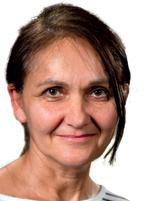
Hewitt, who oversees all aspects of the group’s buying needs, including pre-buys and the occasional copro, says around 800 hours are destined for its three Viasat-branded factual channels, Explore, History and Nature, and scripted network Epic






World’s VP of content strategy and planning. Roberts, who heads the programming team, planning and scheduling of content across linear channels and local VoD Drama.
The group leans into trusted long-term

 By Gün Akyuz
By Gün Akyuz
partnerships, says Hewitt, with distributors such as All3Media, Beta Film, Banijay Rights, ITV Studios and ZDF Studios, while it has also recently worked with the likes of Abacus Media Rights, Zed Rights, Windfall Films, Woodcut Media and Like a Shot Entertainment.
The group is keen to work with new content providers, adds Hewitt, flagging up smaller or more focused annual industry events and markets such as Sunny Side of the Doc, the London TV Screenings and C21’s Content London providing ideal
events marke






























London TV Screenin pro informal settings. b leve return on investmen contribut Wo
Pre-buys make up around 20% of Viasat World’s acquisition strategy, although this varies from year to year and channel by channel. “It’s always about measuring the level of investment versus the return on investment and the resources that we’ve got to contribute editorial into a particular project,” says Hewitt.
Viasat World has refined its pre-buying strategy in the past few years, explains Hewitt. “We always want to know about projects at a very early stage. That’s why we meet producers at the markets and have those conversations, so that we can assess the fullness of the opportunities in the marketplace.”
Hewitt. “ about pr
That’s wh markets w opportun br proposition core conte to see a few channels fre in the marke tha
While Viasat World’s factual and drama brands are “solid channel propositions with very well curated core content pillars,” Roberts is keen to see a few managed risks to keep the channels fresh and tap into “what’s new in the market, testing new concepts, new formats, new ideas and how we can expand out from that.”
On the f t fa Exp and wider “Interes entertain we’re see female characters th centre in the actio
On the factual front, work is now underway to broaden the appeal of maleskewing factual entertainment channel Viasat Explore with more co-viewing and wider perspectives.
“Interestingly, it’s something that producers have recognised in the factual entertainment space. Increasingly, we’re seeing shows with very strong female characters that are absolutely front and centre in the action,” says Roberts, citing
C b
Channel21 International | Summer 2023 CONTENT STRATEGIES: Viasat World 27
n
Nicola Hewitt
Aussie Gold Hunters is set for a spin-off
Backroad Truckers and strong characters like its star Angela Kirstein. Comparable shows five to 10 years ago would largely have had female characters in the back office, he says.

“The world of factual entertainment is moving on and more female eyeballs are coming to this style of content [as a result], and that’s something we absolutely want to champion and make the heart of our strategy,” says Roberts.
The core of the channel continues to be juggernaut franchises like Aussie Gold Hunters from DCD Rights, while it will soon launch spin-off Aussie Gold Hunters: Mine SOS. The channel is “always looking to grow the prospecting shows,” says Roberts, whether it’s big logging, epic engineering, cars, trucks, salvage or fishing. “They’re gritty, authentic characters, the likeable relatable stuff, mostly from a blue-collar world.”
On Viasat History, there’s currently a push to expand the “palette of perspectives” on history. The channel’s programming is built around three core content pillars. One is war and conflict, much of it Second World War-themed programming. Another is evergreen history, featuring big, curated seasons on subjects such as ancient Rome, Egypt or the vikings. A third pillar consists of two or three big landmark specials per year that try to tell “the entire story of a civilisation or one epoch-defining moment of history,” says Roberts.
“A female perspective on history is something we’re looking to explore further. So much has changed in the world in recent years, so we’re always looking for history to bring new voices and perspectives to these pillars and this evergreen content,” he explains, citing Queens of Ancient Egypt, pre-bought from Off the Fence and fronted by prominent Egyptologist Dr Colleen Darnell.
“We’re looking to push boundaries here,” he adds, inviting pitches on “untold stories of great female historic characters by female academics and experts.”
Viasat World’s third factual channel, Viasat Nature, focuses on blue-chip shows from North America and Africa such as Blue Ant International’s Malawi Wildlife Rescue
An increasingly important USP for the channel is European natural history shows such as Europe’s Wilderness from Off the Fence and Terra Mater Studios’ two-part doc Attenborough’s Ant Mountain, filmed in the Swiss Jura mountains.
Roberts says he is keen to find more prehistory content and hosted adventure-style programming in the vein of Patrick Aryee’s Wild World from Cineflix Rights, as well as more returnable, heartwarming animal rescue and animal rehab-type shows.


For scripted channel Epic Drama, meanwhile, pre-buys have helped the female-skewing channel grow strongly over the past three to four years,
says Roberts. Beta Film’s Austrian imperial period drama Sisi, historical murder mystery drama Miss Scarlet & the Duke from A&E Networks and UKAustrian copro Vienna Blood from Red Arrow Studios were all picked up at script stage by the broadcaster.

Roberts and his programming team are now looking for more female-driven dramas like Sisi. “We’re keen on hearing about
Murdoch Mysteries and the UK’s Inspector Morse prequel Endeavour. These are supplemented with acquired evergreen library crime titles such as Miss Marple, Grantchester and Inspector George Gently
An important dimension to Epic Drama is its promise to offer top European programming, says Roberts. “We’re not just about anglophonic content but definitely the best of Europe, and Sisi would be a high watermark of that. We’ve also taken other shows like Babylon Berlin.”
Viasat World looks for exclusive pay TV rights across linear and VoD, but this will also vary as longer periods of exclusivity are more important in some markets over others, Hewitt explains. While the group doesn’t operate a standalone businessto-consumer SVoD service, VoD rights are crucial for its shows, which are made available on-demand via local operators’ platforms, she says.
Viasat World’s deals typically cover a broad panregional footprint with differing requirements, so deals are usually negotiated case by case as “no two deals look the same,” says Hewitt.
Being independent, lean and agile has always been “a strength in terms of how we approach rights and deals,” says Hewitt, highlighting more opportunities for Viasat World now that the US studios are reassessing their “rights warehousing” strategy.
“As a pay TV broadcaster, exclusivity is going to remain an important part of how we structure our deals, especially for premier content that we’re going to shout about and highlight on the channels,” says Hewitt. “But it’s also about being pragmatic and flexible, and depends on the titles, the channel, which market we’re buying for and holdbacks.”
more dazzling female-led dramas with that sensual edge. They can be either standalone events or, like Sisi, returning blockbuster shows,” he says.

Alongside its pre-buys, Epic Drama’s core mix of programming includes established international hits such as long-running Canadian crime series
Email is the best way to pitch to Viasat World. “If you haven’t worked with us before, it’s just a top-line pitch and whatever supporting material you have,” Hewitt says, specifying a single page, a treatment, a sizzle or a full episode and a clear proposition. “We want people to come to us with new things, but there are some genres we just aren’t in, like current affairs, social interest docs or pure reality television.”
“ The world of factual entertainment is moving on and more female eyeballs are coming to this style of content, and that’s something we absolutely want to champion and make the heart of our strategy.
Stephen Roberts Viasat World
CONTENT STRATEGIES: Viasat World Channel21 International | Summer 2023 28
From top: Backroad Truckers with Angela Kirstein, Patrick Aryee’s Wild World from Cineflix Rights, Beta Film’s Austrian period drama Sisi and Off the Fence’s Queens of Ancient Egypt
Your unfair advantage in the international content business
Give yourself an unfair advantage with the most comprehensive daily news and analysis available in the content business
Subscribe to C21PRO for as little as £150 per user/year and gain access to a deeper level of analysis
Get exclusive access to:
• EXCLUSIVE NEWS
• ANATOMY OF A DEAL
• CONTENT ECONOMICS
• COUNTRYFILE
• DEVELOPMENT SLATE
• FUNDAMENTALS
• NEWS ANALYSIS
…And so much more!
• PERSPECTIVE
• THOUGHT LEADER SHIP
• THREE YEAR PLAN
• C21 REPORTS
• C21SCR EENINGS
• C21TV
• MEDIABASE
C21 - you either get it or you don’t
C21Media.net
The head of development at Wildflame Productions in Wales discusses her journey from onscreen TV talent show fame to success off-camera as a creative executive.


 By Neil Batey
By Neil Batey
In 2006, gifted 23-year-old singer Connie Fisher was catapulted to celebrity status in the UK as the winner of BBC talent show How Do You Solve a Problem Like Maria?
The programme was created by musical theatre impresario Andrew Lloyd Webber, with the aim of finding an undiscovered performer to play the role of Maria von Trapp in a stage production of The Sound of Music.
Fisher’s victory instantly elevated her to leading-role status in London’s West End, and led to her recording two solo albums and performing live at Wembley Stadium in front of 63,000 people at the Concert for Diana event in 2007.
However, Fisher’s showbiz dreams were shattered in 2011 when she was diagnosed with holes in her vocal cords, which prematurely ended her career as a professional singer.
It was a heartbreaking turn of events for the performer, who had grown up on the stage. And although Fisher was able to pick up more TV work – presenting religious show Songs of Praise and acting in medical drama Casualty (both on the BBC) – she realised it was time to forge an alternative career path.

“I was still working as talent, but that’s often shortlived and I needed to think of the future,” Fisher says. “I wondered how I could transfer my theatre skills and realised that I knew how to tell a story every night to an audience – just like a TV creative.”
In 2013 Fisher appeared in a documentary commissioned by Welsh pubcaster S4C. Titled Gwreiddiau: Connie (Roots: Connie), it told the emotional story of her twin brother Justin, who tragically died at birth. During the filming process, a development executive from the doc’s producer, Avanti Media, asked Fisher if she had any good ideas for TV show concepts.

My Big Break Connie Fisher

“Do I ever miss being a celebrity? I had a moment on TV that I’ll always be grateful for. It changed my life, and without it I wouldn’t have a wonderful career as head of development at Wildflame.
 Connie Fisher
Connie Fisher
“So I wrote a couple of top lines for them, and one idea for an undercover audition show got commissioned as a pilot for Channel 4,” she says. “That led to being offered a job at Avanti as part of the development team. I worked there for three years, writing ideas, pitching them and travelling the world to TV markets to understand the formats space more. It was a great education for me.
“As a former stage girl, I often felt like an imposter in the production industry, so winning a Welsh Bafta in 2015 for Jamie Baulch: Finding My Birth Mum made me feel I’d earned my stripes.”
One of the original team members who launched Welsh factual and formats label Wildflame Productions in 2016, Fisher quickly got to work using
her showbiz contacts to develop talent-led shows such as Michael Ball’s Wonderful Wales (Channel 5), Katherine Jenkins: Home for Christmas and Strictly Amy Dowden: Crohns & Me (both BBC).

Upped to head of development in 2022, Fisher has been integral to developing a new slate of content for 2023. It includes such projects as feature-length doc Frogmore: A Royal Residence Through Time (Channel 5); 1x30’ doc The Island Keeper (BBC One); 6x60’ true crime series Euog (working title), presented by journalist Sian Lloyd (S4C); and a second season of 5x30’ entertainment format Amy Dowden’s Dare to Dance for BBC One Wales.
“We’ve done many single docs at Wildflame, but now we’re really looking to develop ambitious primetime series and grow our relationships with broadcasters here in the UK,” says Fisher. “I’m looking to develop that binge-worthy, incredible juggernaut of a series that every indie prodco wants.


“I also like talent-led specials in which celebrities reveal personal stories about themselves. Strictly Amy Dowden: Crohns & Me is a good example of that, as is Sex, Me & Disability featuring Rhys Bowler, which screened on S4C’s Drych documentary strand in 2022.
“I sometimes felt like a commodity when I was on TV myself, so that experience has enabled me to treat the talent we work with as human beings and encourage them to open up. Aftercare once the show has been filmed is also important.
“Do I ever miss being a celebrity? I had a moment on TV that I’ll always be grateful for. It changed my life, and without it I wouldn’t have a wonderful career as head of development at Wildflame.”



Channel21 International | Summer 2023
BACKEND 30
Amy Dowden’s Dare to Dance
Sex, Me & Disabilty
Connie Fisher
By Karolina Kaminska
Swedish scripted veteran Lars Blomgren is six months into his new role as head of international at Michael Ellenberg’s US production company Media Res after stepping down from European powerhouse Banijay, where he was head of scripted, at the end of last year.

Blomgren’s task at Media Res, which former HBO exec Ellenberg set up in 2017, is to develop international dramas as a producer and executive producer, focusing on sourcing IP from outside North America to target at US buyers – a strategy that has been given added significance by the Writers Guild of America strike.
The exec is splitting his time between Stockholm and LA, aiming to repeat the success the prodco has seen with dramas such as Apple TV+’s Pachinko and The Morning Show. Its comedy series I’m a Virgo, created by US filmmaker Boots Riley, will debut on Amazon’s Prime Video on June 23.



“It’s so different to be in the US. [Ellenberg] is really good with curation and handling scripts and understanding the creative side, but he’s also brilliant when it comes to packaging, which is a completely different sport to what we do. I can have access to IP and talent from other parts of the world, so it’s a good match. I can source material and bring it to them and we can build it together.”
Blomgren’s content strategy is to develop a smaller number of projects that are “safe bets” at a time when budgets are shrinking and securing commissions is proving challenging.
“I’m Scandinavian, so some projects will come out of Scandinavia, but we also have development in Japan and in the UK. I will have to have an opportunistic approach and go for fewer but safe bets,” he says.
“Part of my final message to the Banijay group was right now it’s so challenging to get commissions, so if you have a brilliant project that you love, but with any kind of headwind, just park it for now and focus on the things that can get commissioned. You will be able to sell it later on if it’s good enough, but not right now.”
Despite the tough environment for commissions and Blomgren’s safe-bet strategy, the exec doesn’t see a danger of the industry moving away from the risk-taking attitude it has adopted in recent years in favour of a return to the safer procedural-type shows that once dominated the content landscape. Additionally, he notes the difficult economic situation is reopening doors for coproductions.
“The first cycle of streaming is over and it’s a new
Development Slate Media Res
world now. Covid and the war in Ukraine maybe sped that up, but it wasn’t a sustainable situation and would have happened anyway. Producers, we’re like water – we always find a way down the mountain,” he says.

When asked about coproductions, Blomgren advises producers to consider the cultures of all the

countries taking part in order to create a successful programme.
“The most important lesson is you have to embrace and respect the local culture. You can’t have an imperialistic view, thinking, ‘I’m from the bigger country so we’re doing it my way.’ That’s why I’ve always wanted to have broadcasters from both territories attached when we start,” he says. “Even between Sweden and Denmark there are incredibly different cultures and mindsets.”
The local commissioning model at streamers is creating headaches as well as opportunities for producers looking to sell ambitious projects, Blomgren told C21’s Content LA event in May.

“The entry point is extremely important, especially now because the streamers’ local offices have gotten much better, so the bosses or the higher-ranking people trust the local commissioners. But if you bypass them, you will insult them, so the best entry point is [still] to go to the people in that area, but then you will end up with a budget that is way too small,” Blomgren said.
“If we want to do something that is slightly elevated or bigger, then it doesn’t work because now the message from all the streamers is that it’s local for local – not local for global. We’ve had several conversations with several streamers about how to bypass this system without insulting anyone.”
When asked whether The Morning Show, which examines the culture inside a breakfast TV show, could be turned into an international scripted format, Ellenberg hinted that it might be a possibility in the future. “I’ll just say it’s a good question,” he said.
Additional reporting by Jordan Pinto.
Channel21 International | Summer 2023 31
“
Part of my final message to the Banijay group was right now, it’s so challenging to get commissions, so if you have a brilliant project that you love, but with any kind of headwind, just park it for now and focus on the things that can get commissioned.
Lars Blomgren
Former Banijay exec Lars Blomgren of Media Res talks about his international content priorities and the challenges the US-based production studio faces.
BACKEND
Lars Blomgren (left) and Michael Ellenberg at Content LA
Boots Riley’s comedy series I’m a Virgo
AI on the prize
Artificial Intelligence (AI) is coming. In many ways it’s already here. While AI terrifies some, it excites others. I’ll leave it to lawyers and politicians to debate the ethics and/or moral hazards of AI because I’m focused on one finite truth: AI will impact the way we do business in the film and TV industry, so we’d better get used to it. But the more I think about the possibilities, the more I lean into the ‘excited about AI’ camp – and I think you should too.
Here’s why. Targeted advertising might still be finding its footing, but the concept of seamlessly integrated ads blends perfectly with where the media business is heading. And as ad-supported VoD (AVoD) viewership balloons – and advertisers gain more visibility of AVoD/free ad-supported streaming TV (FAST) engagement – the next five-toseven years will see tremendous growth and expansion in ad-supported exhibition.
I’m not prophesying here; advertising was always the critical funding component for television and media, and that’s not changing. But in today’s world, targeted advertising and virtual product placement are taking the smart/fluid integration of advertisements to a whole new level – which could make those jarring ad breaks a thing of the past.
And with AI, the product experience I see versus that of another viewer could expose our industry to a level of interwoven advertising that’s essentially seamless to audiences, while worth many billions to advertisers – which is more than enough cash to greenlight entire slates of content.
Meanwhile, distributors are exploiting deep catalogues in a way they weren’t just 10 years ago. In the past, catalogue was catalogue. You’d occasionally broker deals on a few hidden gems buried in a deep library, but a lot of it sat untouched.
But now distributors have every title up and running via VoD, often across multiple streaming platforms in various verticals (linear streaming, FAST, etc). To extract meaningful revenue, one needs to manage all these active titles – and when a company has thousands of hours across multiple platforms it can be a massive time and talent drain.

Rather than wasting human time, AI can manage the deep catalogue, tweaking tags, joining promotional opportunities, replacing key art and even revising loglines – all automatically and in real time.
As a distribution and coproduction exec, I routinely find myself pitching film and TV
Scott Kirkpatrick, executive VP of coproductions and distribution at
LA-based Nicely Entertainment, on why you should be excited about the impact of artificial intelligence on the entertainment business.
content that doesn’t yet exist. It’s tough to sell the product when you don’t have a sample. AI can make selling something that doesn’t exist a much more tangible possibility, which could entirely revolutionise the development, coproduction and pre-selling process.
Future derivatives of ChatGPT could allow executives a real-time chance to compare how a treatment might be transformed into a full script based upon the writing styles of two or three different writers, before the arduous contracting process.
AI could allow writers’ rooms a chance to map out a variety of complex episodic storylines. Talent agencies representing writers, actors and musicians could upload voice, audio and/or writing samples so that extrapolations of their clients’ likeness could be batch-tested for sample content creation, so that executives could implement their wishlists into a mock version of the potential film or TV product.
Is any of this different to today’s ‘look book’ or ‘pitch deck’ approach featuring wishlist talent plastered all over the pages to secure the deal? Conceptually, it’s the same old process, just a lot more time-efficient and cost-effective, offering more assurance about what’ll come out the other side.
There are inevitable problems that will certainly need to be ironed out (for example, deep fakes, copyright infringement and content ID technology), but fortunately that will keep legal departments well employed for the next decade.
Personally, I’m not always an early adopter of the latest and greatest; I’ve never invested in crypto currency (and have zero plans to do so) and my car is 22 years old. I park blocks away from meetings to avoid embarrassment, but I cannot bring myself to get rid of something that still works.
However, AI excites the hell out of me. And I cannot wait to see how this technology impacts our business positively over the years to come.
EDITORIAL
Editorial director Ed Waller ed@c21media.net
Editor of C21Media.net
Jonathan Webdale jonathan@c21media.net
Chief sub-editor Gary Smitherman gary@c21media.net
Chief sub-editor, Drama Quarterly John Winfield john@c21media.net
News editor Clive Whittingham clive@c21media.net
Channel21 International editor Nico Franks nico@c21media.net
DQ editor Michael Pickard michael@c21media.net
Research editor Gün Akyuz gun@c21media.net
C21Kids editor Karolina Kaminska karolina@c21media.net
North American editor Jordan Pinto jordan@c21media.net
Senior reporter Neil Batey neil@c21media.net
C21TV
Head of television Jason Olive jason@c21media.net
Video editor/motion designer Adrian Ruiz Martin adrian@c21media.net
FINANCE
Finance director Susan Dean susan@c21media.net
Finance manager Marina Sedra marina@c21media.net
Finance officer Shuhely Mirza shuhely@c21media.net
ADVERTISING
Founding partner and commercial director Odiri Iwuji odiri@c21media.net
Sales director Peter Treacher peter@c21media.net
Business development director Nick Waller nick@c21media.net
Sales manager Hayley Salt hayley@c21media.net
Senior sales executives Richard Segal richard@c21media.net
Malvina Marque malvina@c21media.net
Telesales executive Yasmin Connolly yasmin@c21media.net
PRODUCTION
Operations director Lucy Scott lucy@c21media.net
Head of digital Laura Stevens laura@c21media.net
Operations manager Milly Aylott Harvey milly@c21media.net
Production and events coordinator Courtney Brewster courtney@c21media.net
Digital assistant Alex Stevens alex.stevens@c21media.net
EVENTS
Event programming director Ruth Palmer ruth@c21media.net
Head of events Gemma Burt gemma@c21media.net
Events coordinator Lucy Corona lucy.corona@c21media.net
Events assistant Francesca Bartlett francesca@c21media.net
Programming coordinator Erin Blackmore erin@c21media.net
Group CFO (consultant) Ravi Ruparel ravi@c21media.net
Editor-in-chief & managing director David Jenkinson david@c21media.net
No part of this publication may be copied, stored or copied on to any electronic system or broadcast via any other medium without prior consent of the publisher. All rights reserved. All trademarks acknowledged. © Channel21 International 2023 ISSN number: 1460-0668
PRESENT IMPERFECT FUTURE TENSE: Scott Kirkpatrick Channel21 International | Summer 2023 32 2nd Floor, 148 Curtain Road, London EC2A 3AT Tel: +44 (0) 20 7729 7460 Fax: + 44 (0) 20 7729 7461 Email: post@c21media.net You can read C21 every day on www.C21media.net – the world’s leading International Entertainment Business website. Also on C21Media.net you can find a number of channel brands and services including C21Kids, C21FormatsLab, C21Factual and Content Strategies and an extensive industry MediaBase which is constantly updated and features more than 25,000 contacts worldwide. Subscribers to C21Media.net have access to the most respected information source in entertainment. This issue of Channel21 International was printed by Walstead Roche, Cornwall. Channel21 International is registered as a newspaper.
“
I routinely find myself pitching film and TV content that doesn’t yet exist. It’s tough to sell the product when you don’t have a sample. AI can make selling something that doesn’t exist a much more tangible possibility.




































































































































NOVEMBER 27-30 PROMPT START HOW AI WILL CHANGE THE CONTENT BUSINESS THE MAIN THEME OF CONTENT LONDON 23 IT’s YOUR FUTURE OWN IT REGISTRATION OPEN CONTENTLONDON.NET
The top rated event in TV is back! Hilton Miami Downtown, 23-25 January 2024







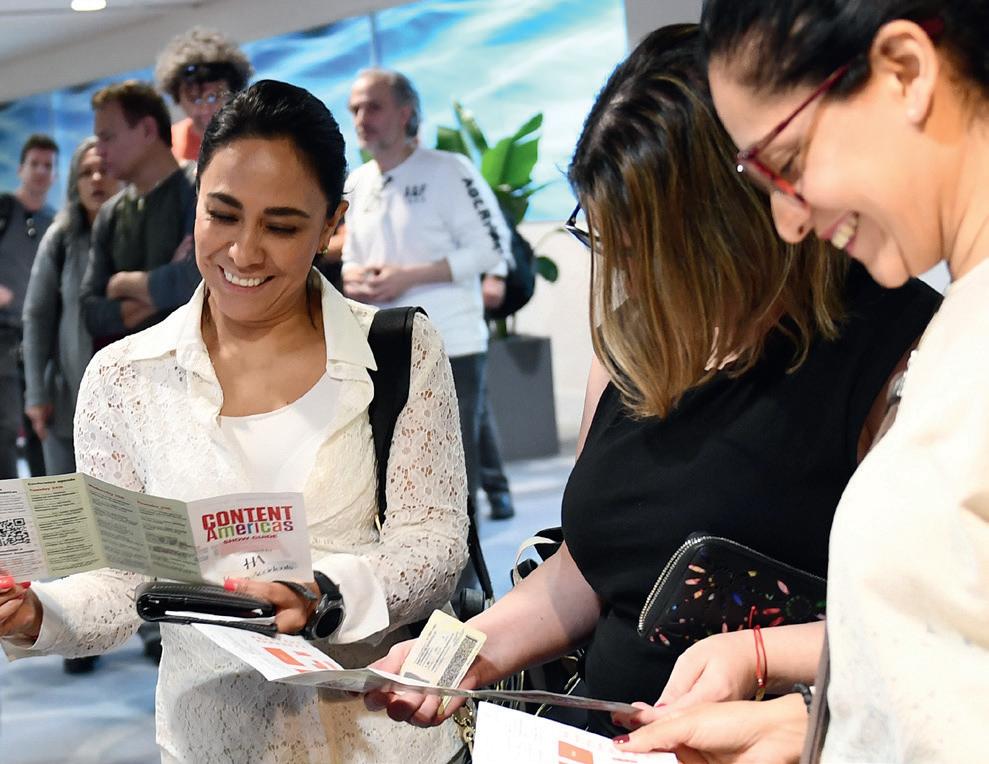

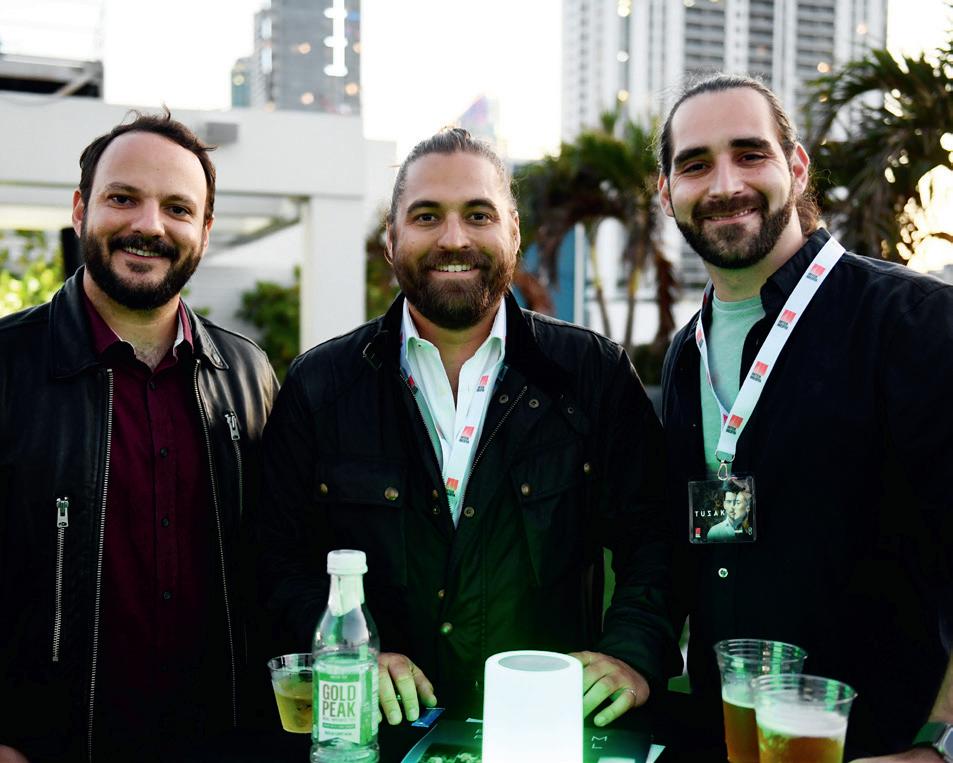




HOT 100 NORTH AMERICAN HITMAKERS LOS100














































































































































































 Nico Franks
Nico Franks




























 By Jonathan Webdale
By Jonathan Webdale





































































































































































 By Gün Akyuz
By Gün Akyuz







 By Neil Batey
By Neil Batey



 Connie Fisher
Connie Fisher



































































































































































